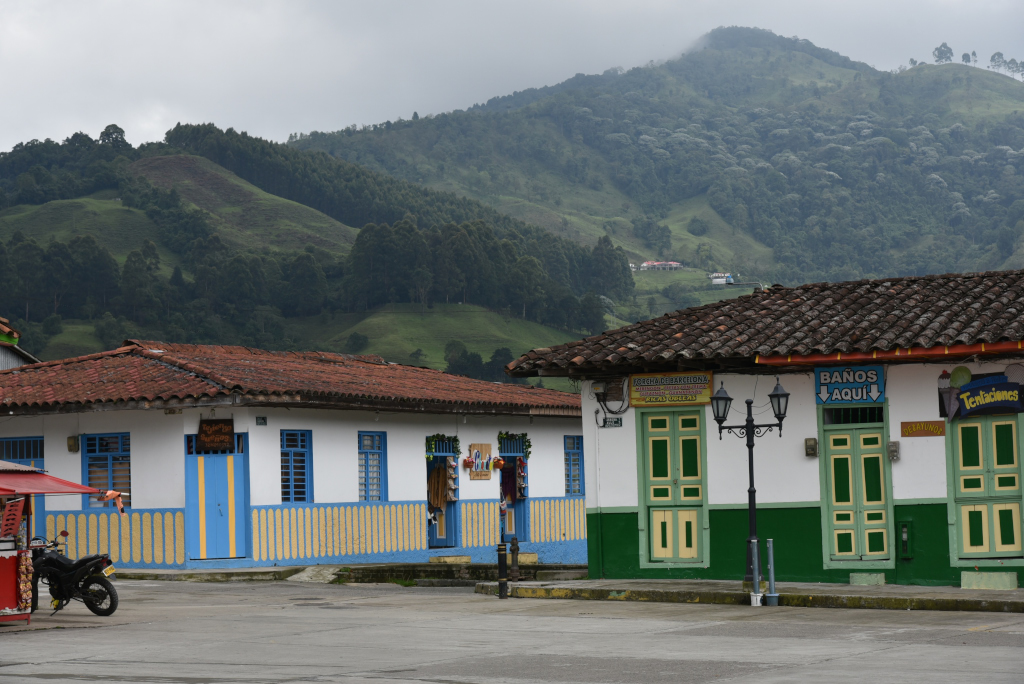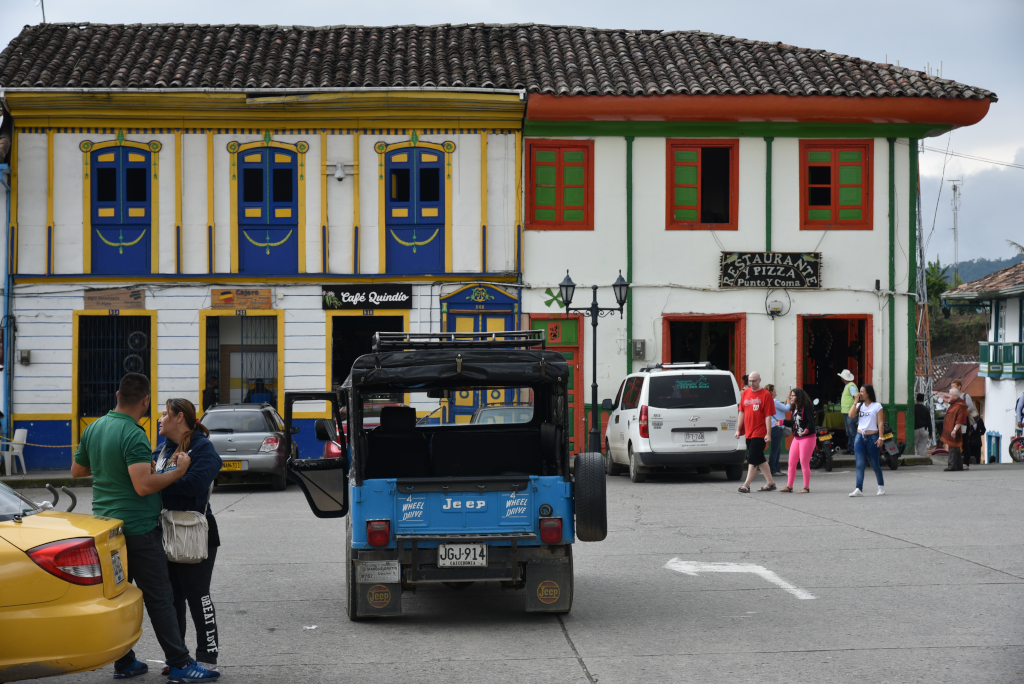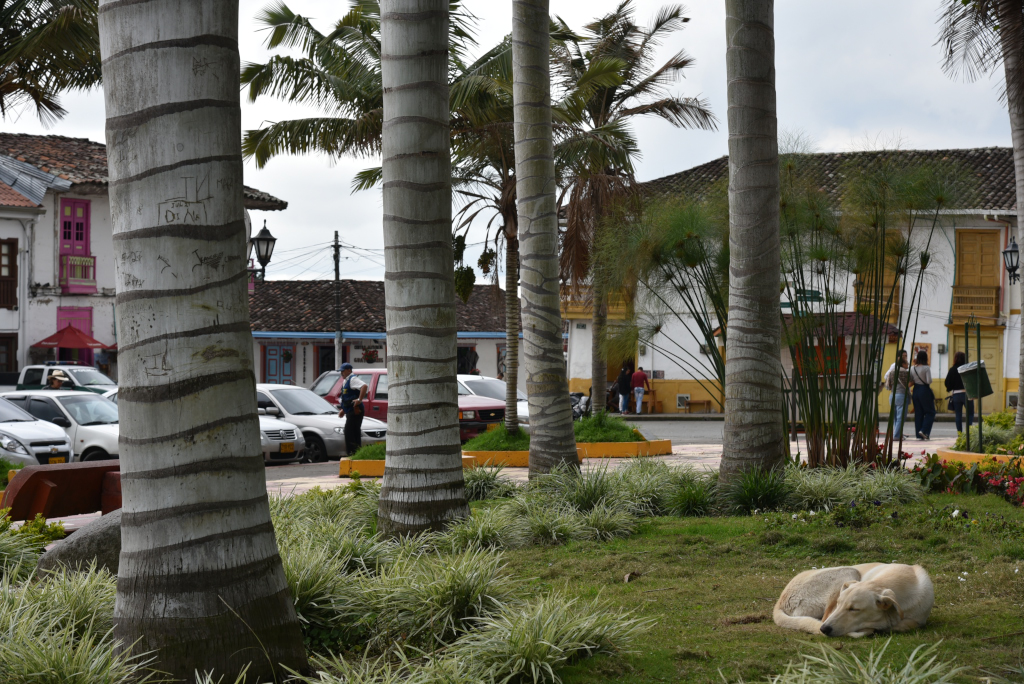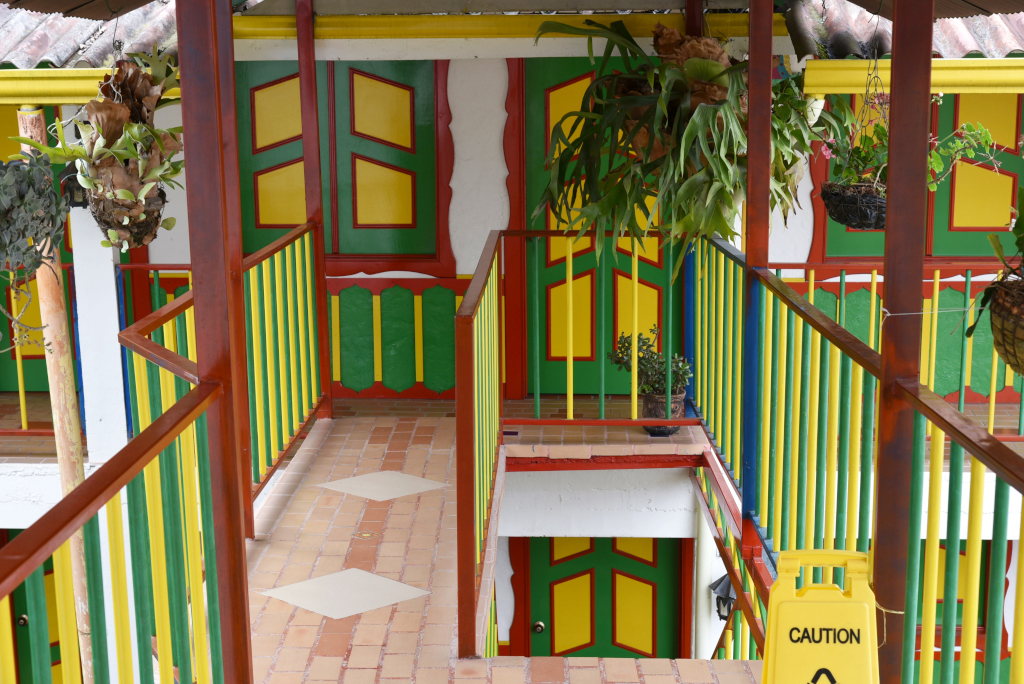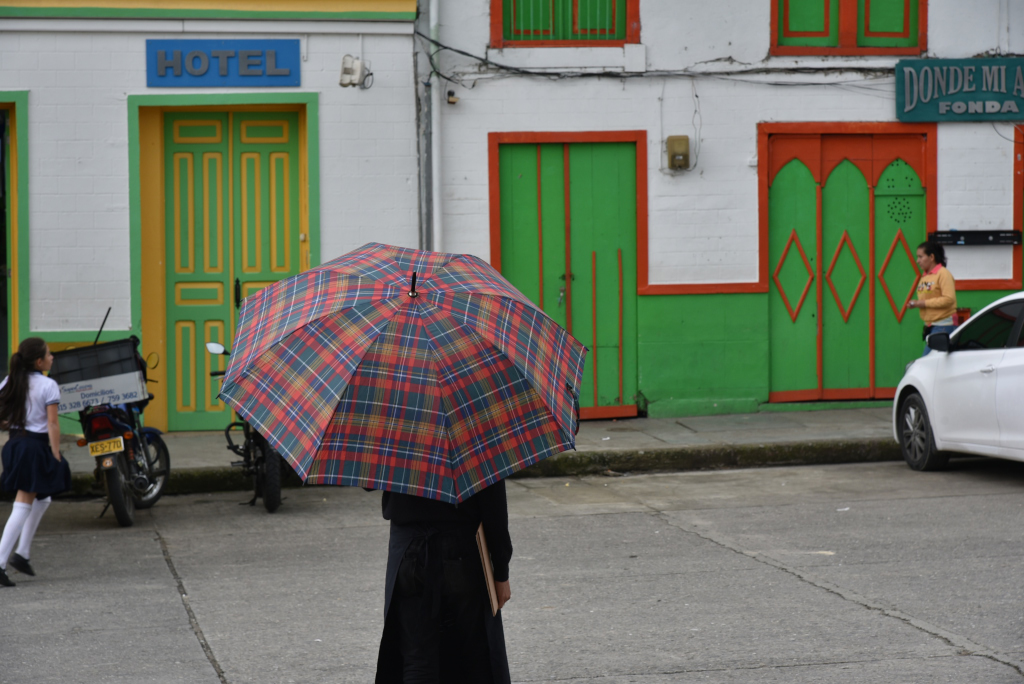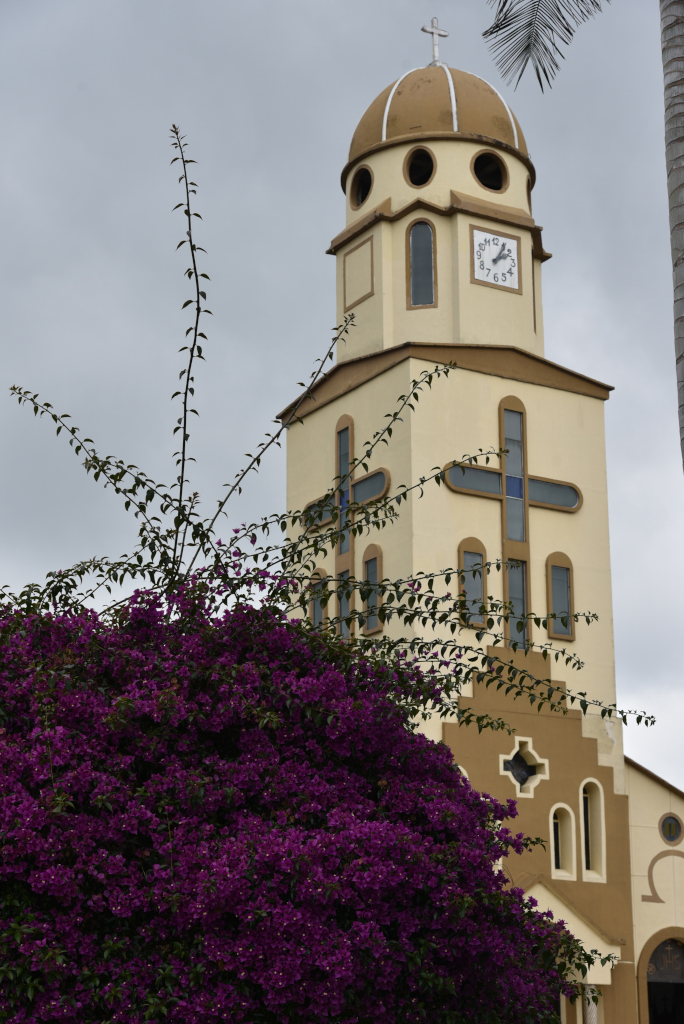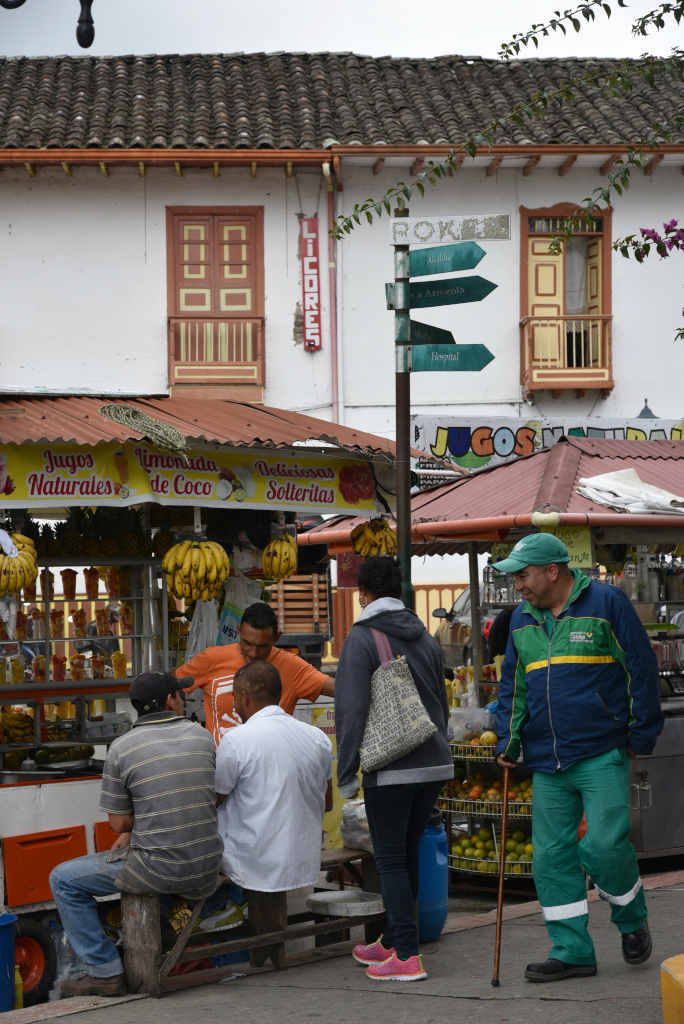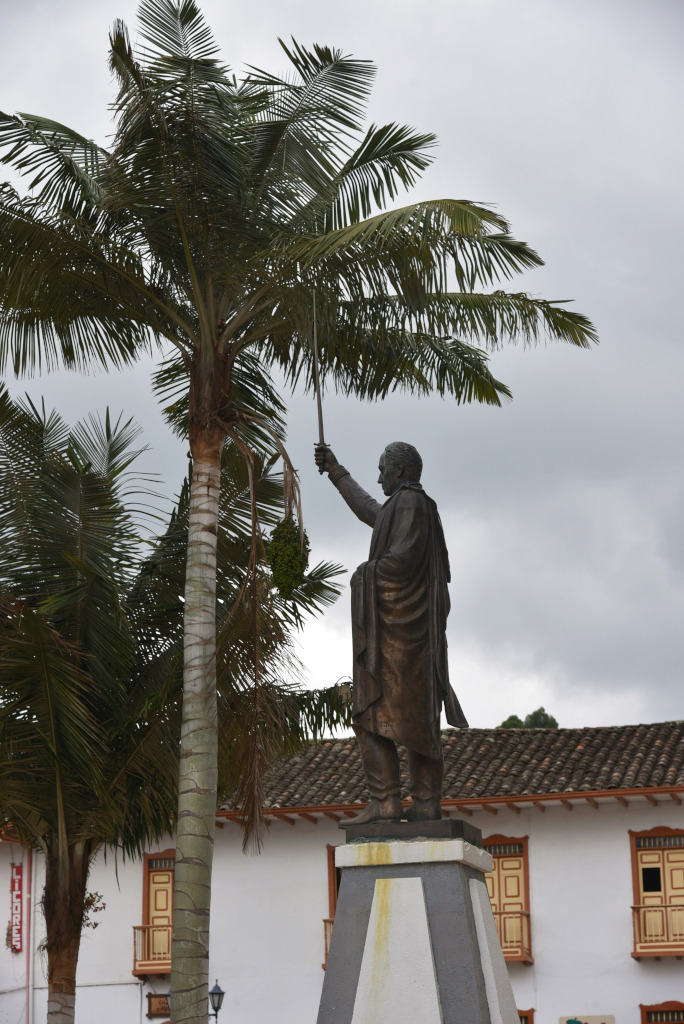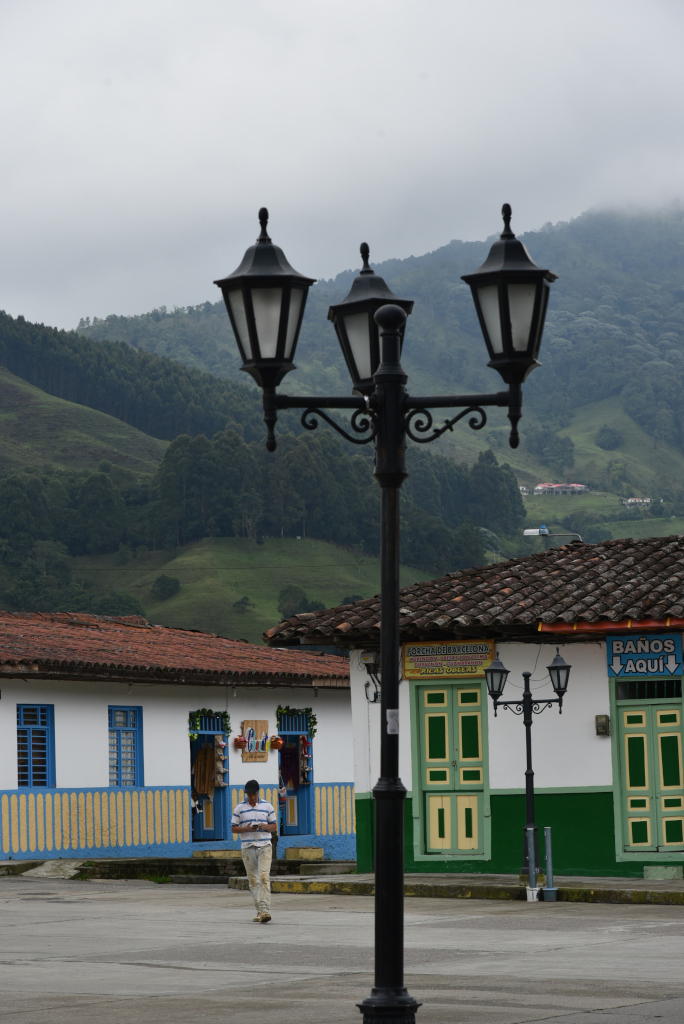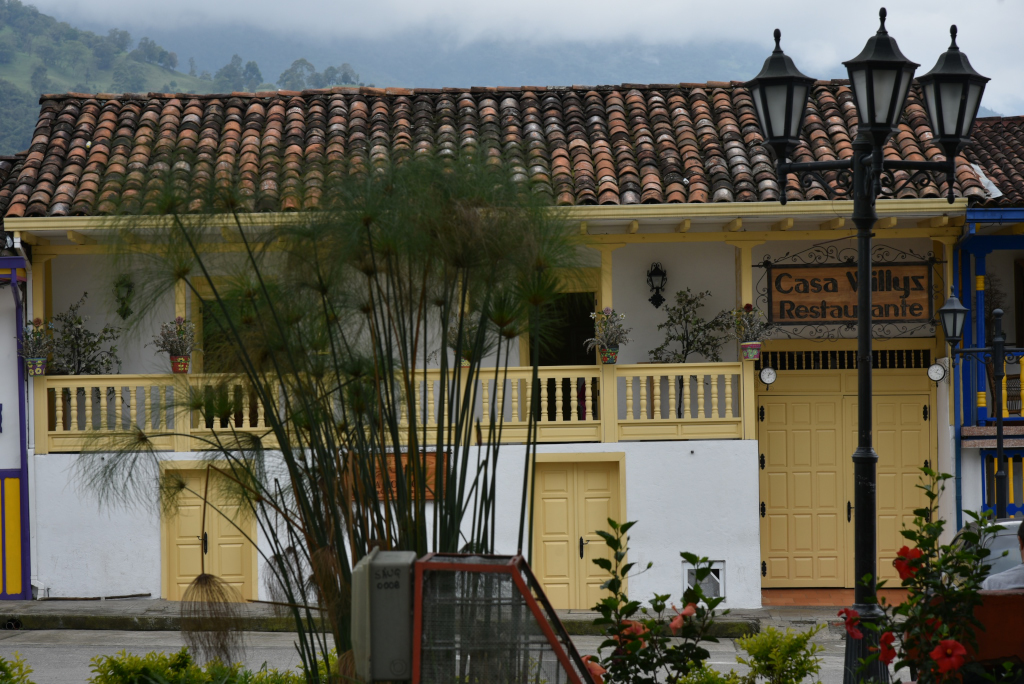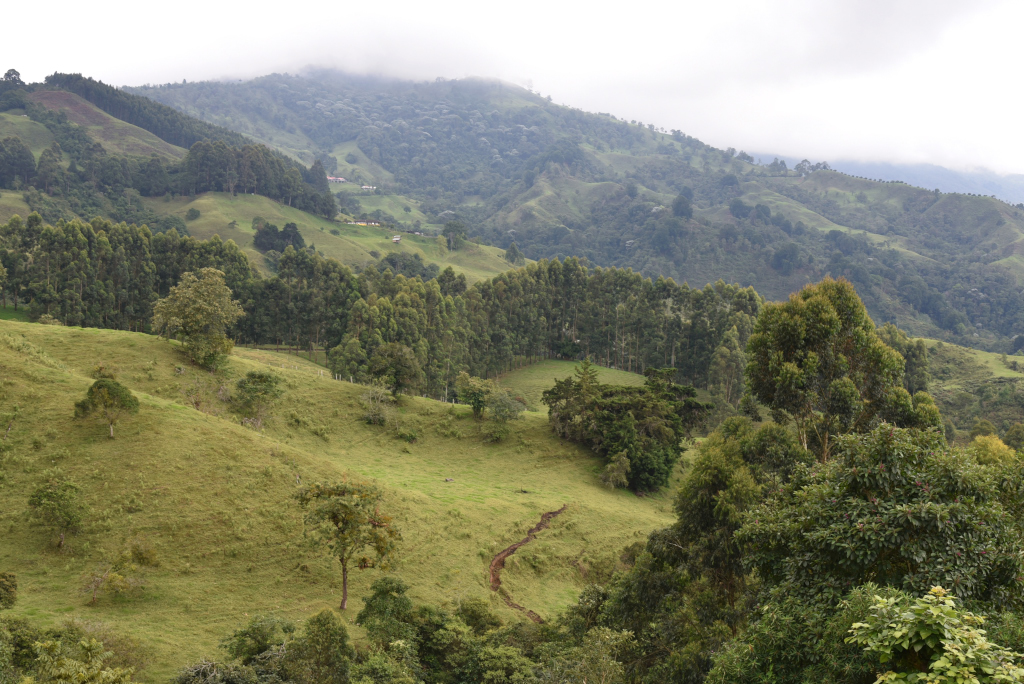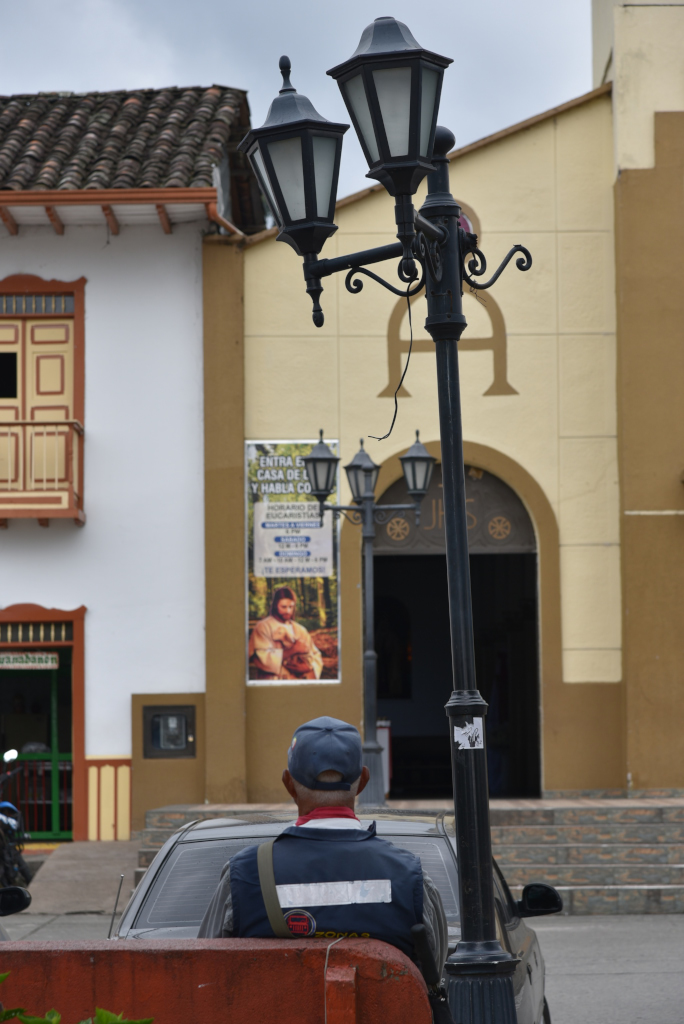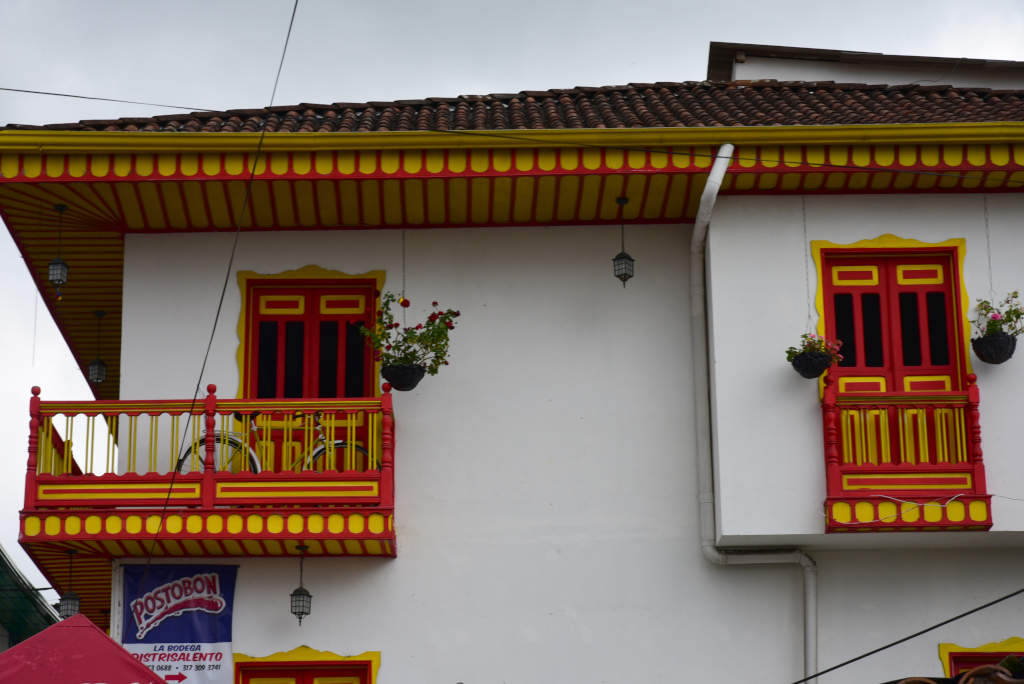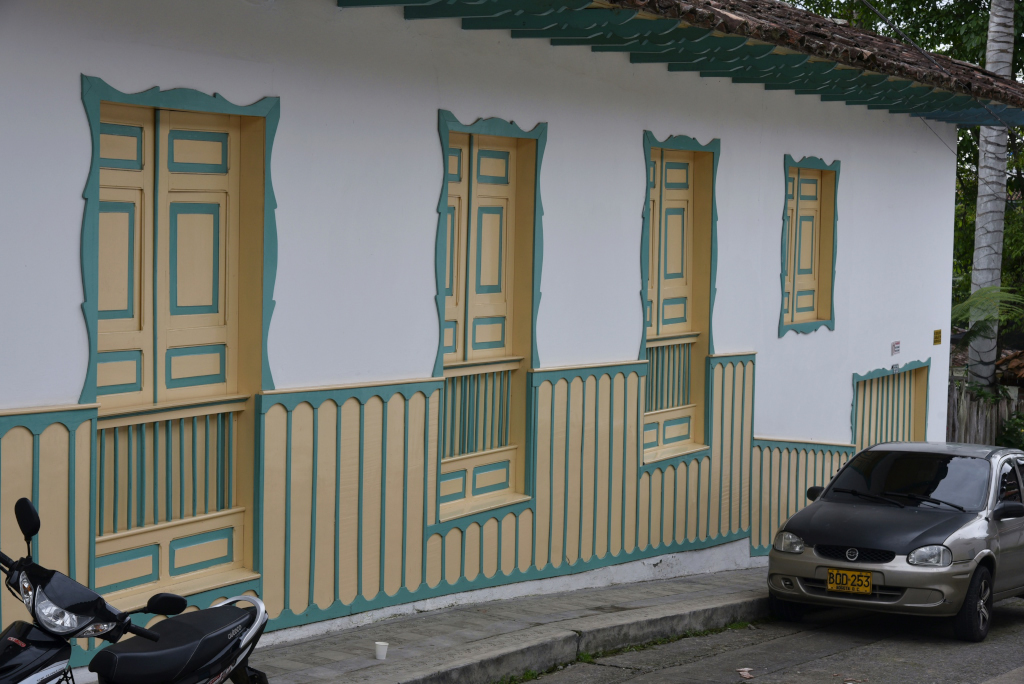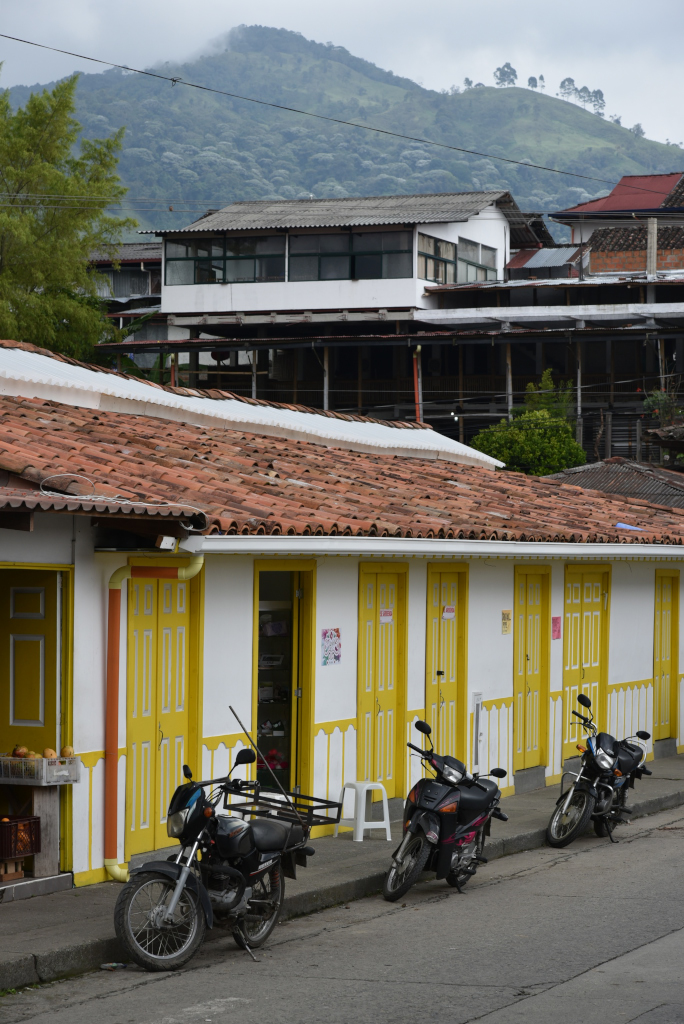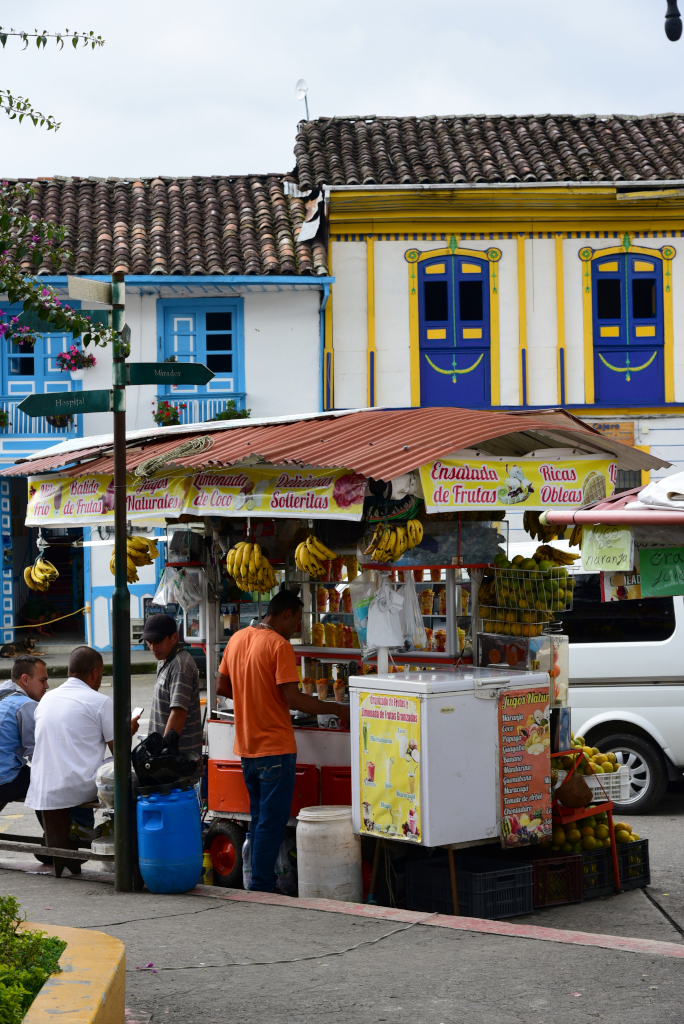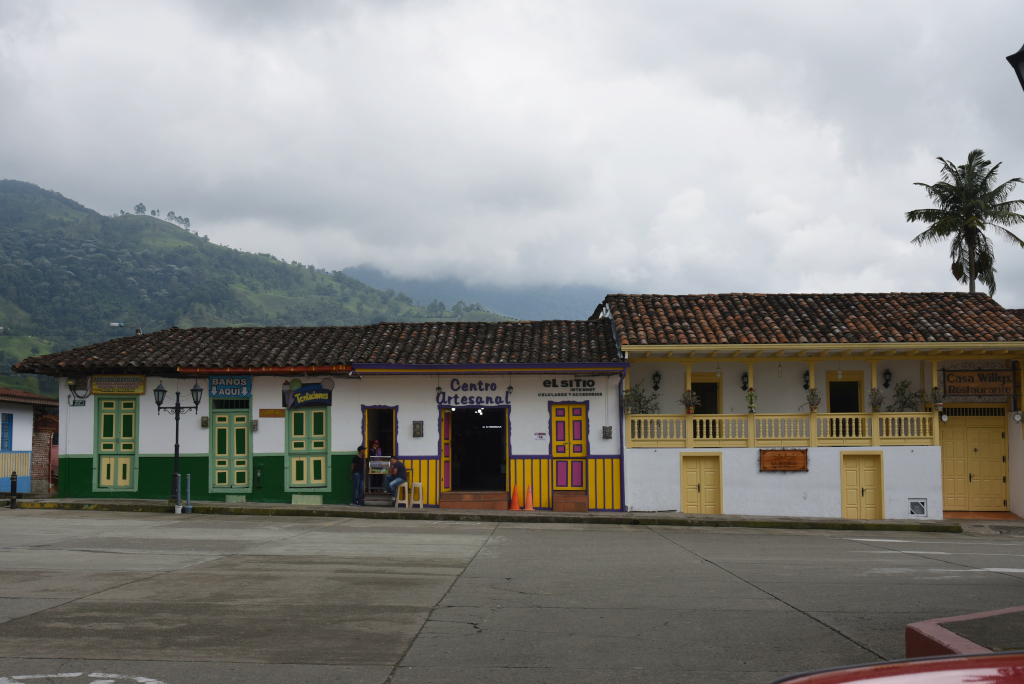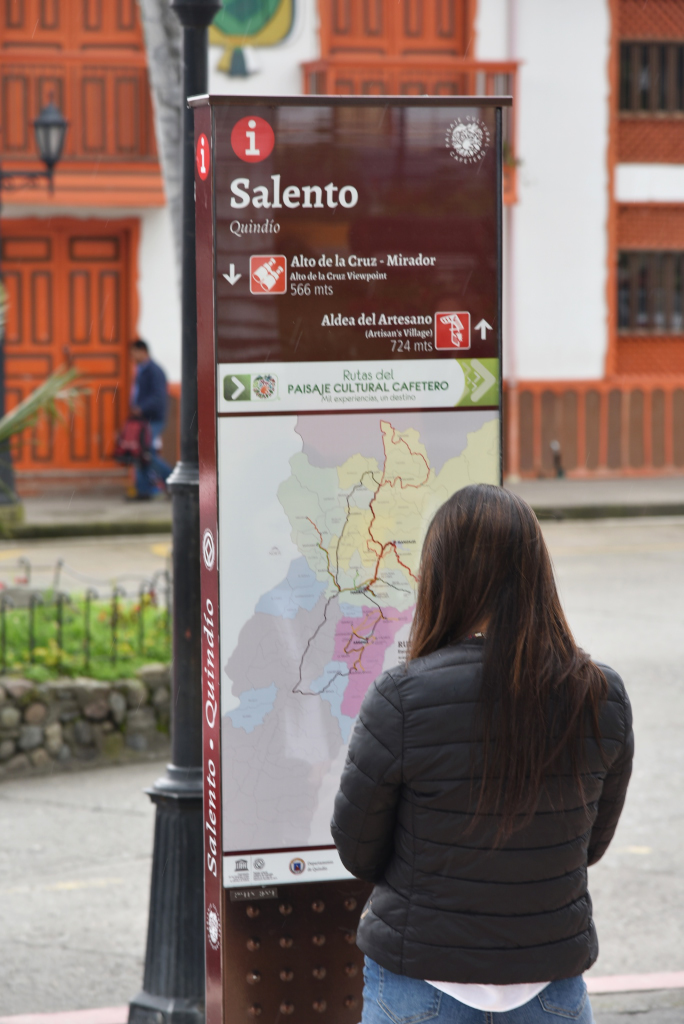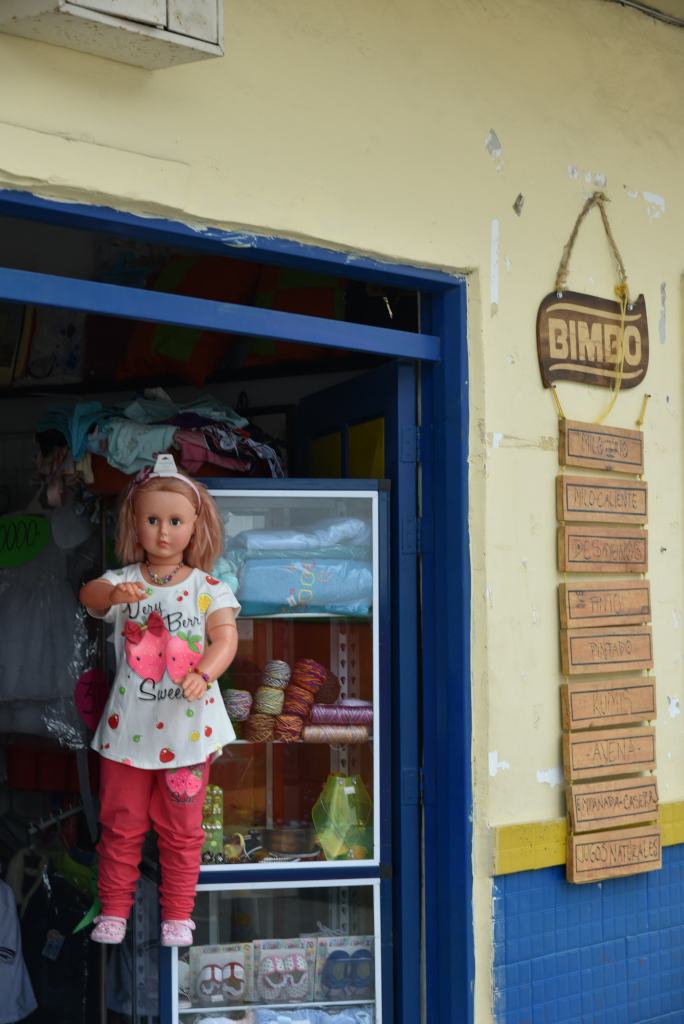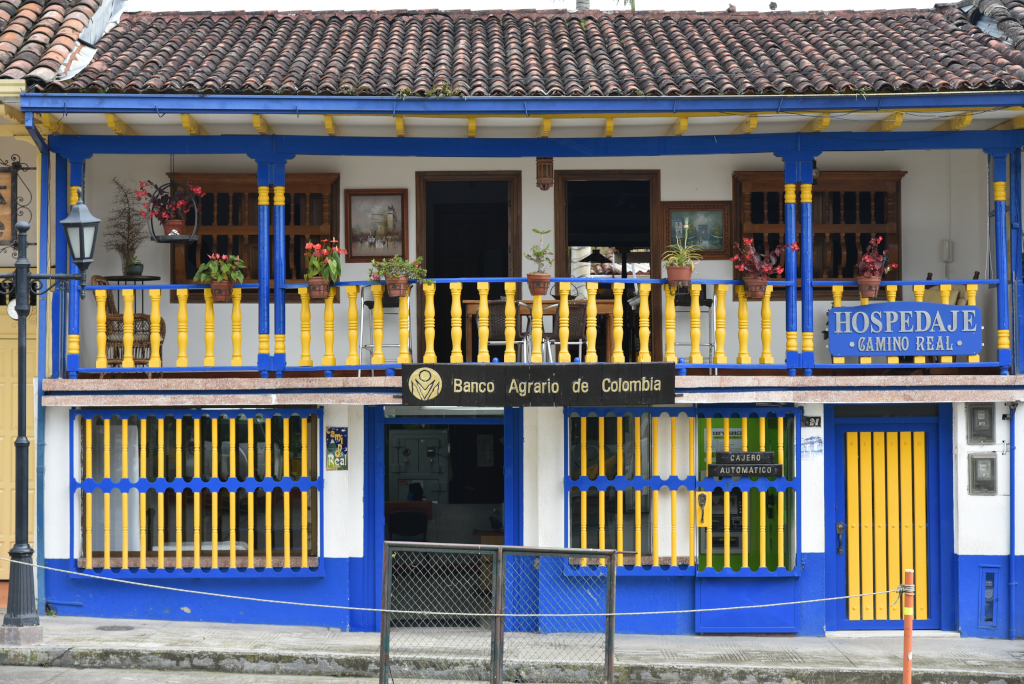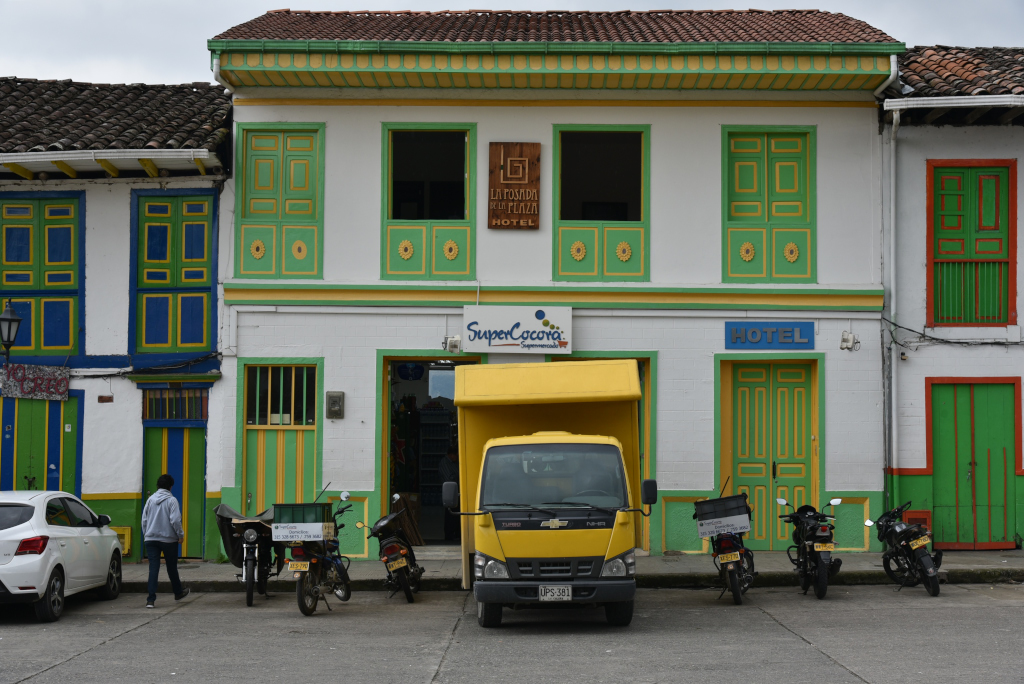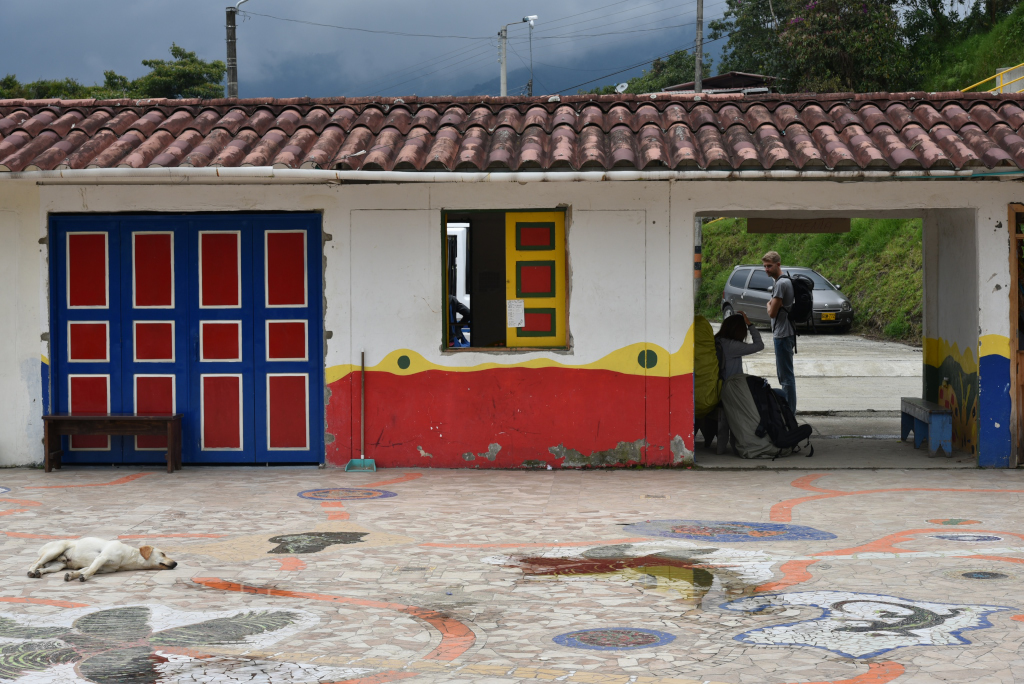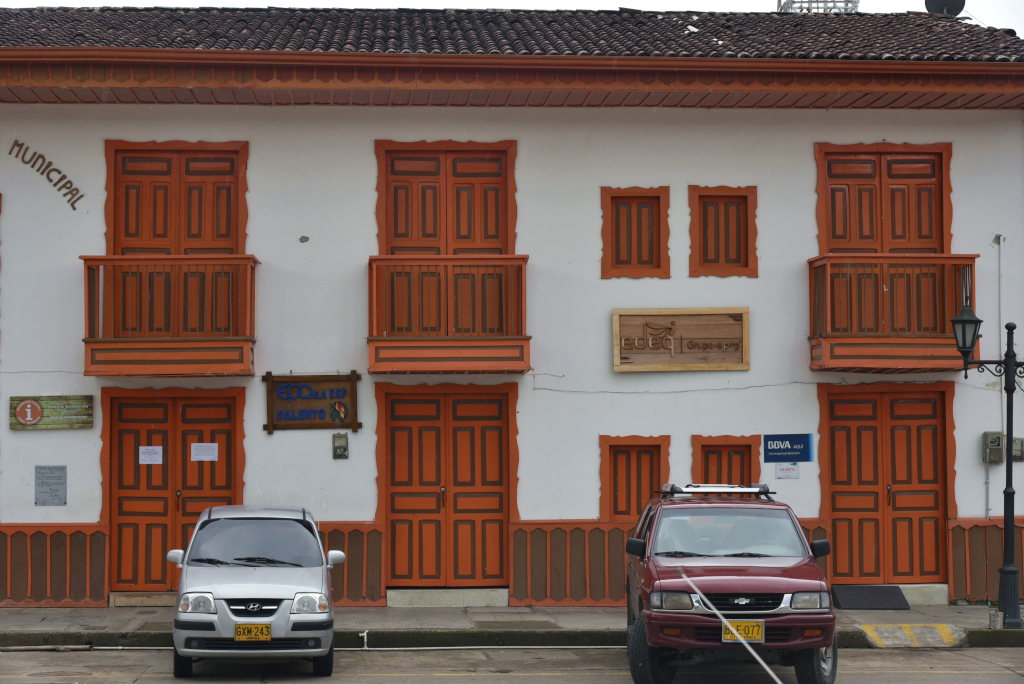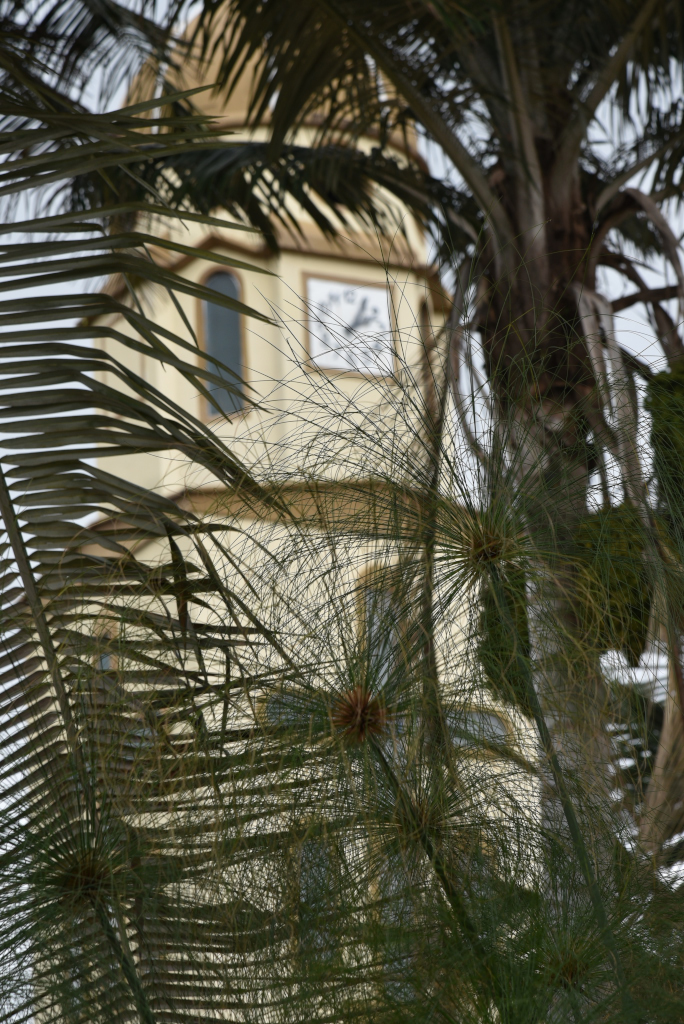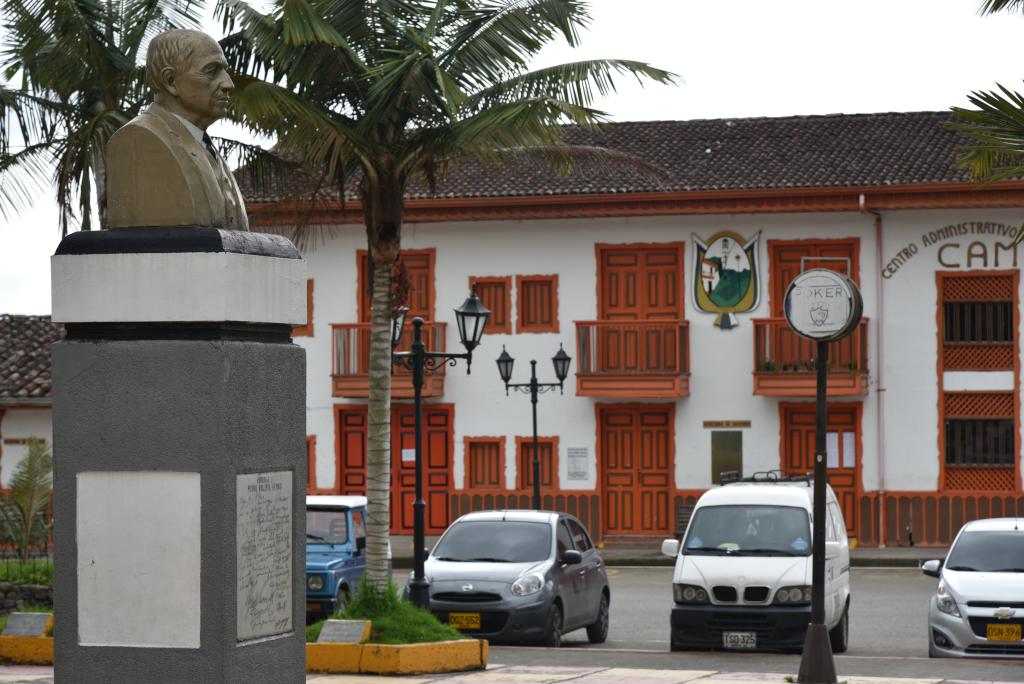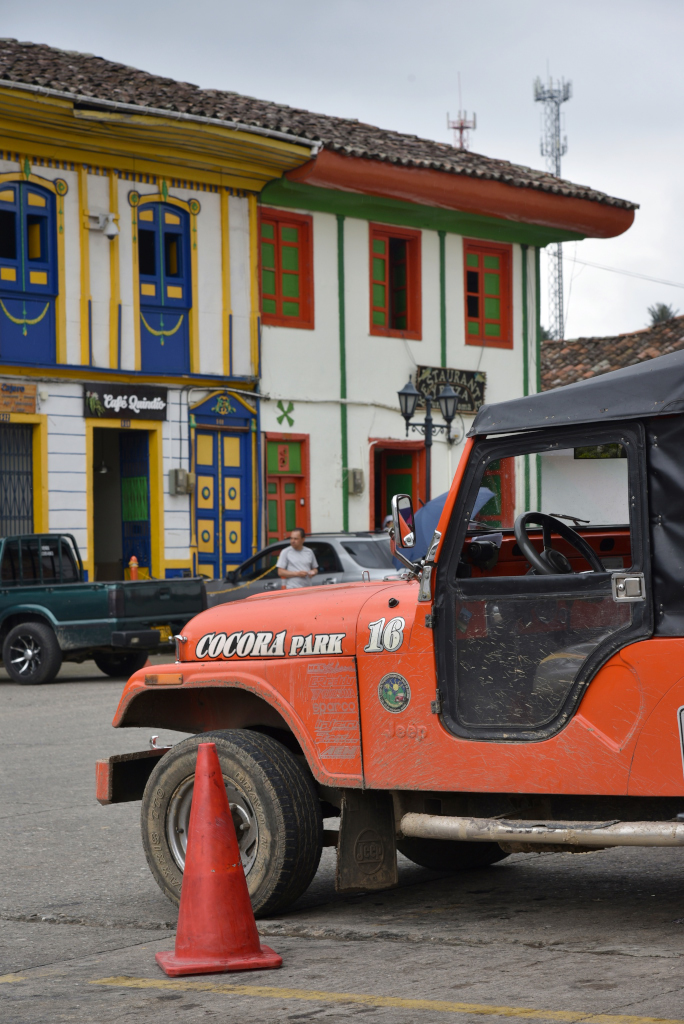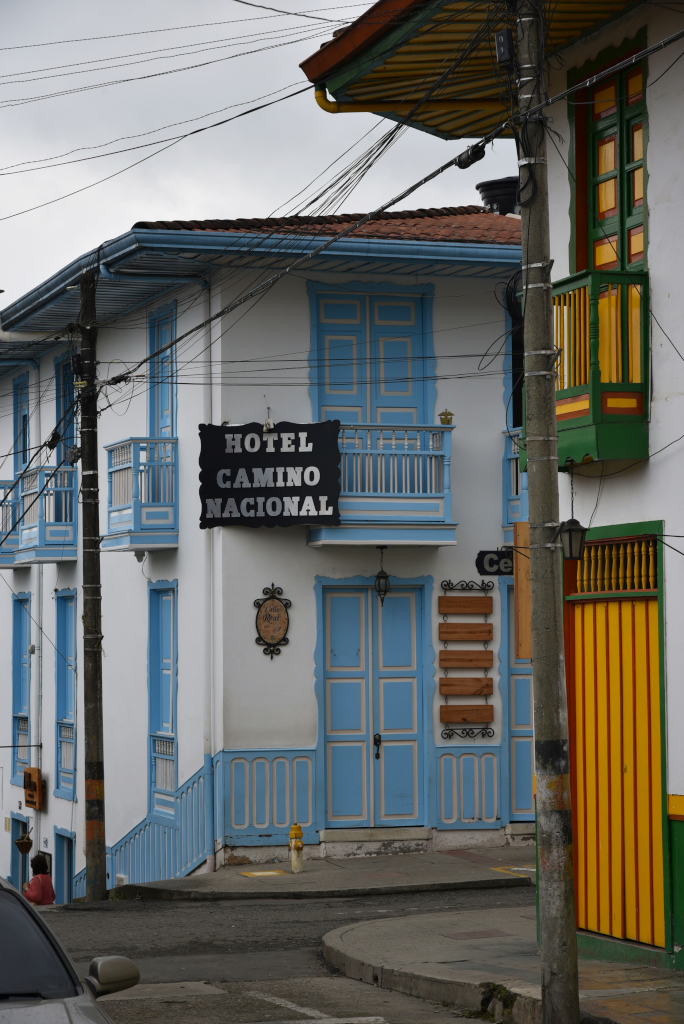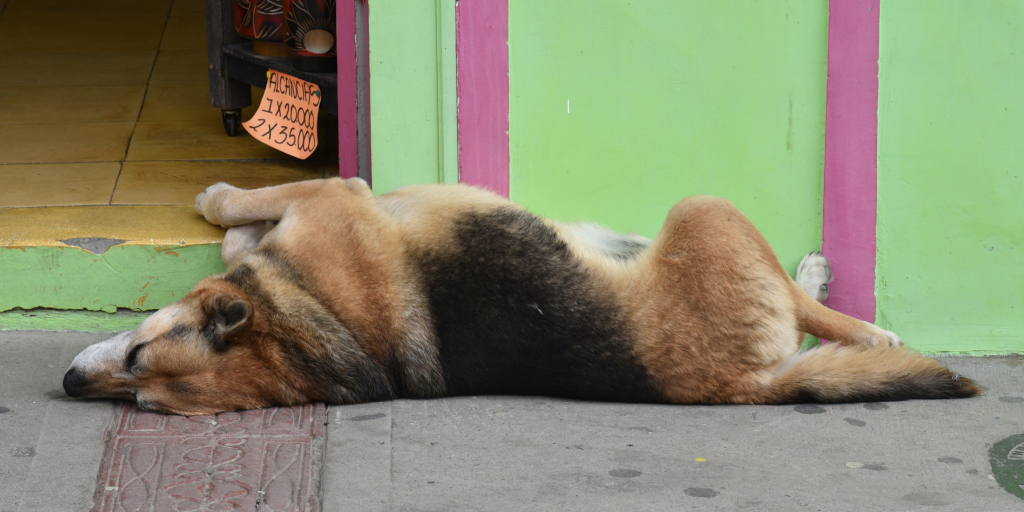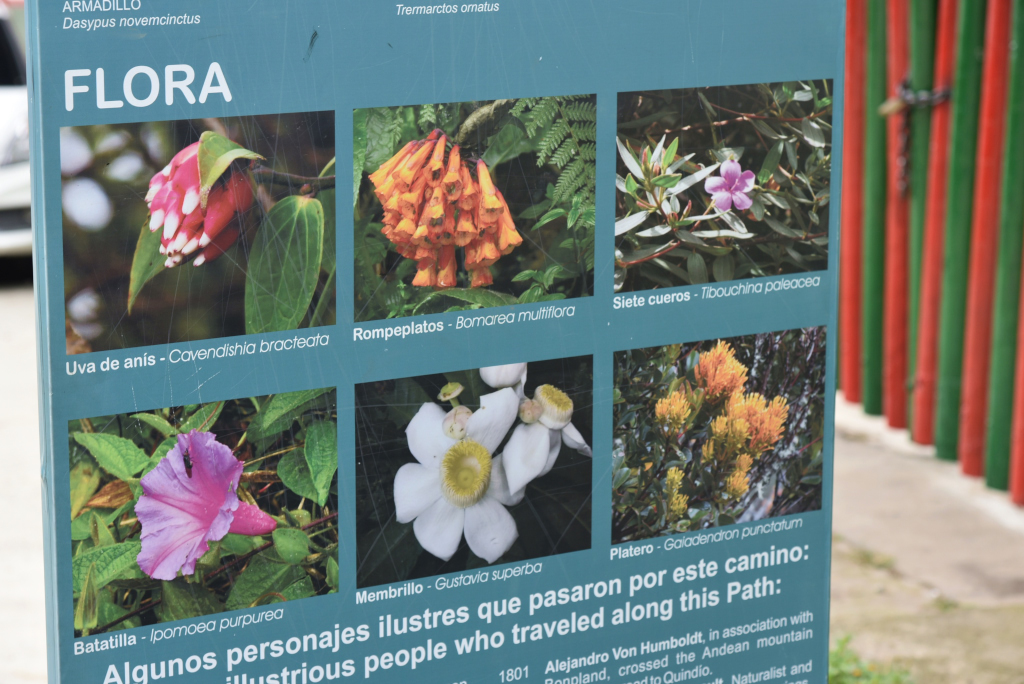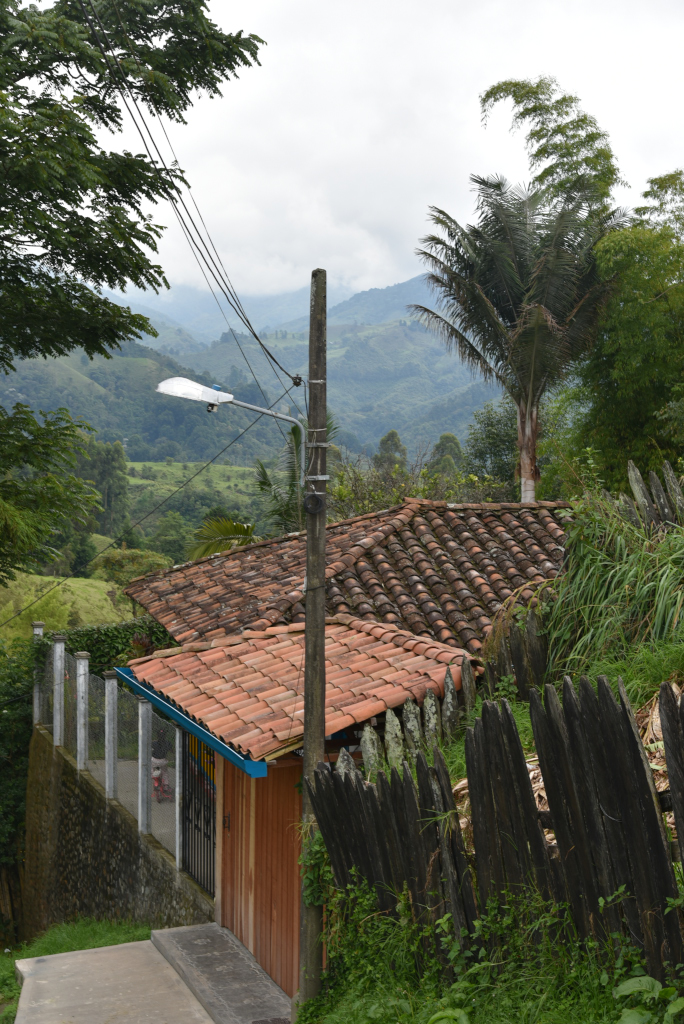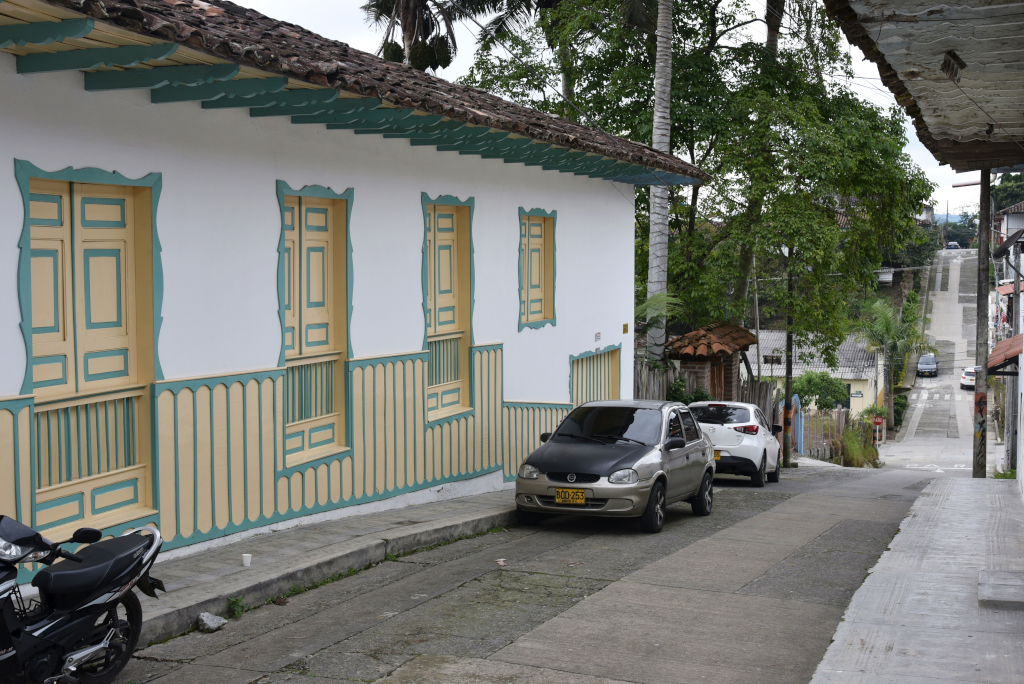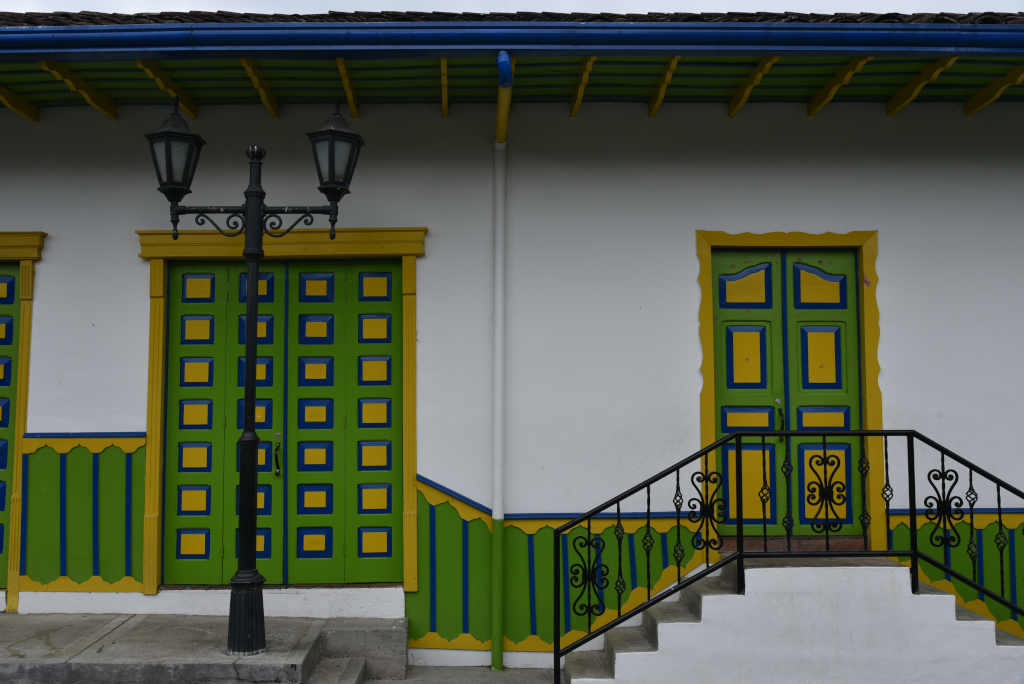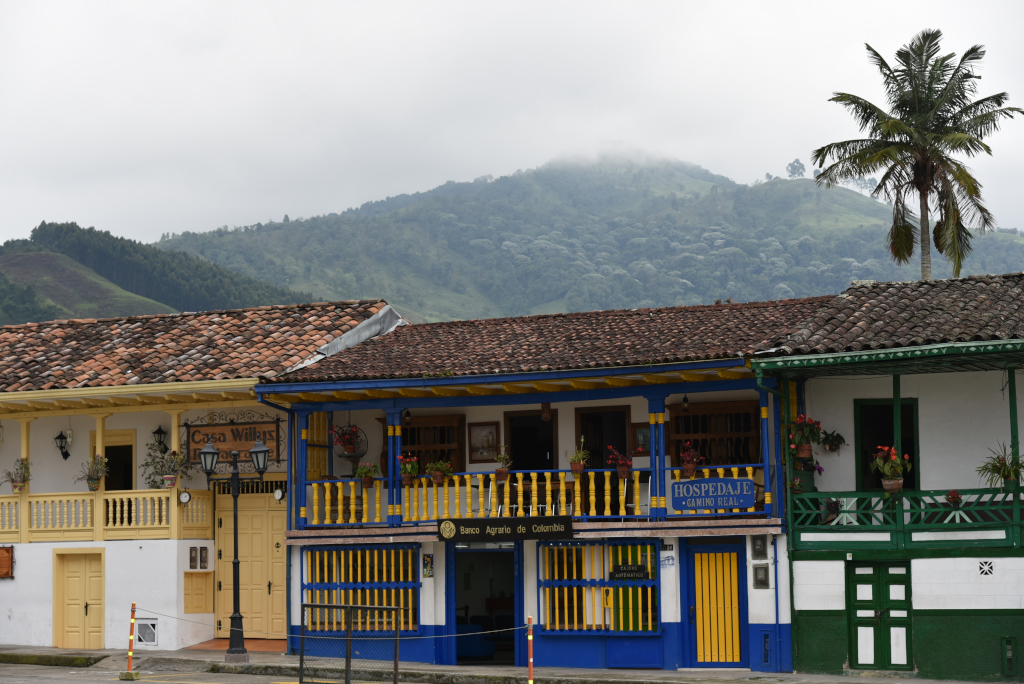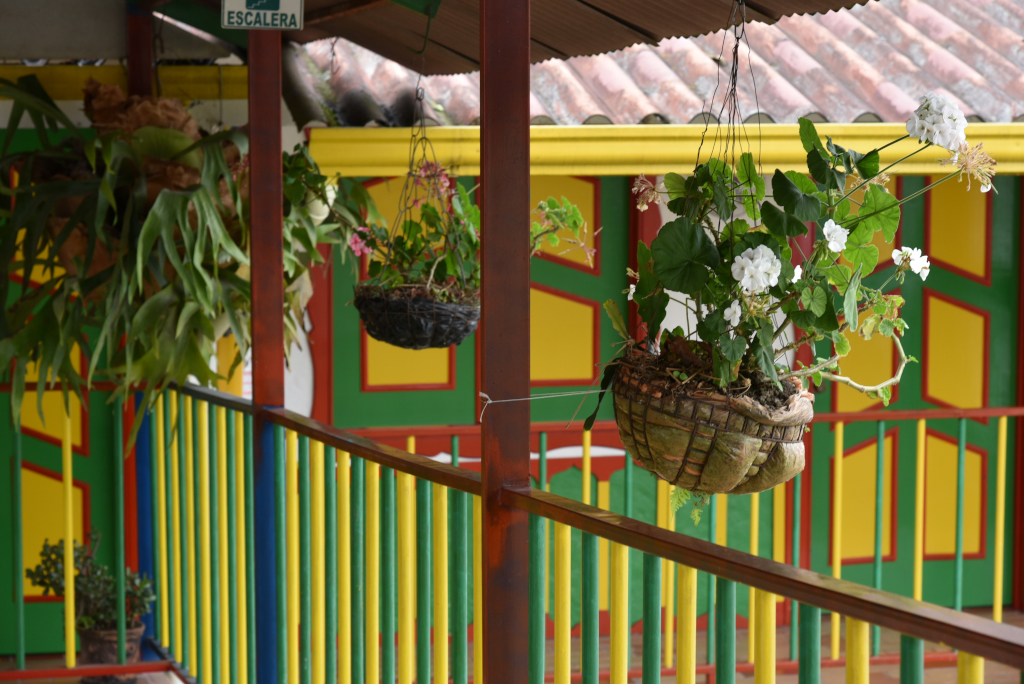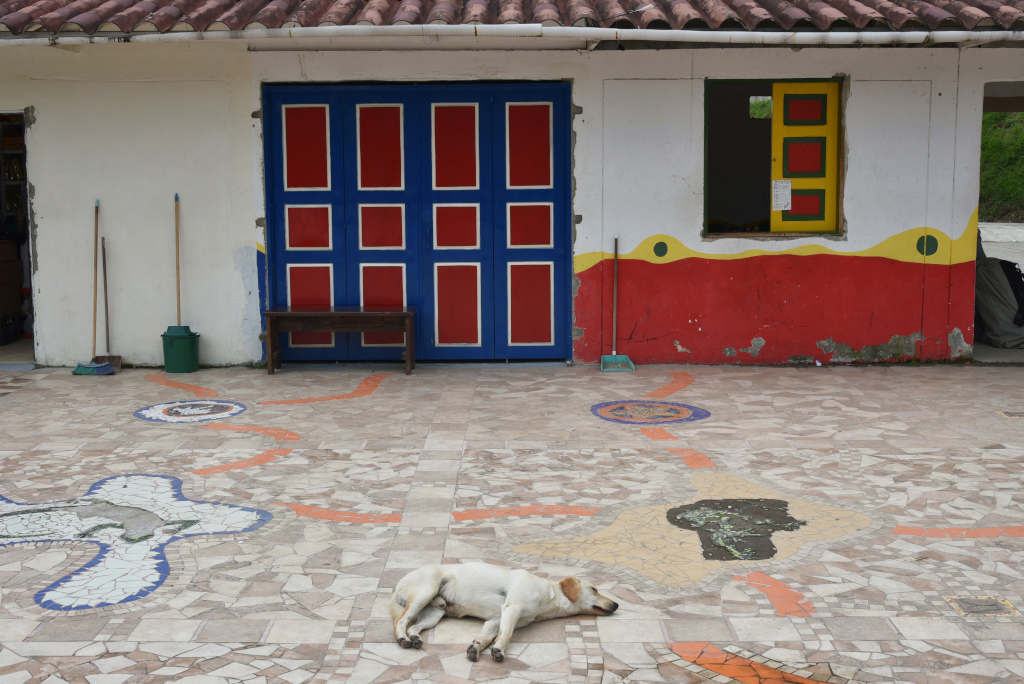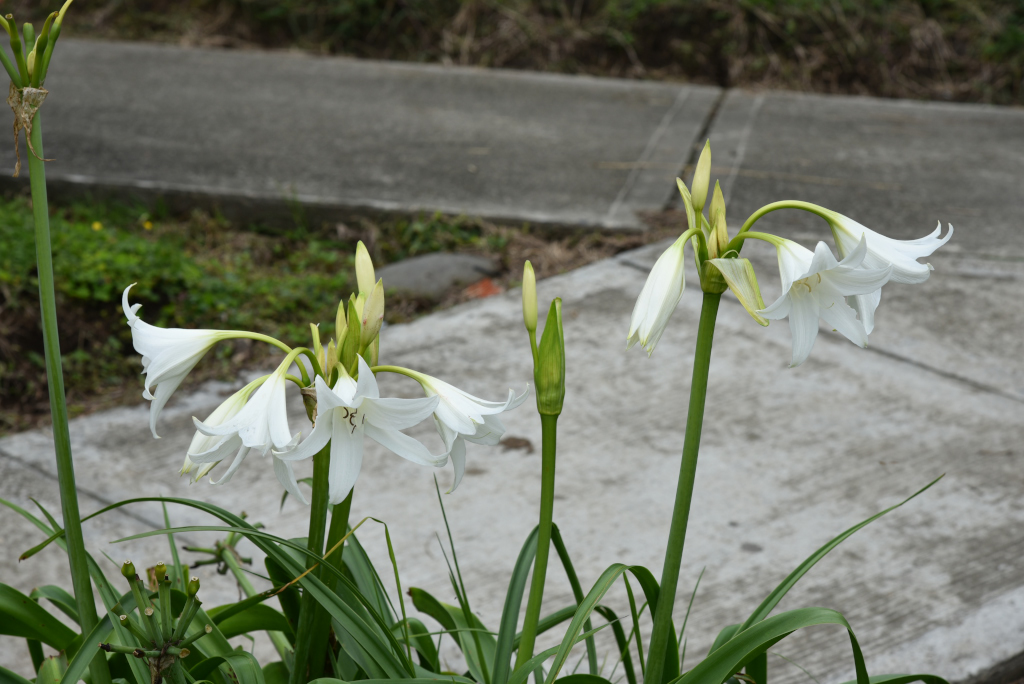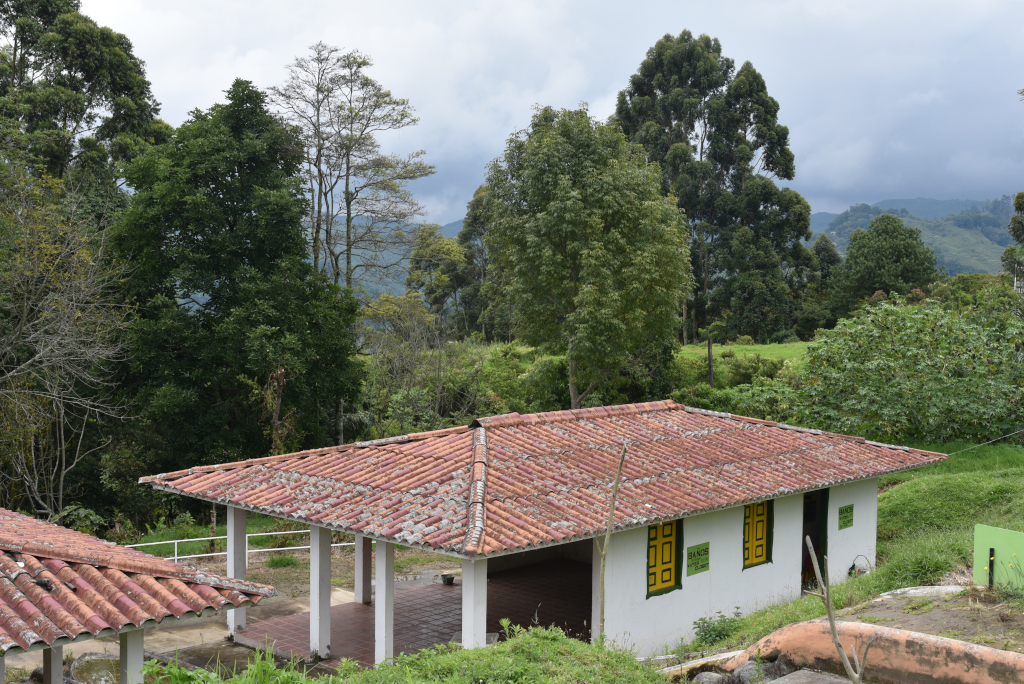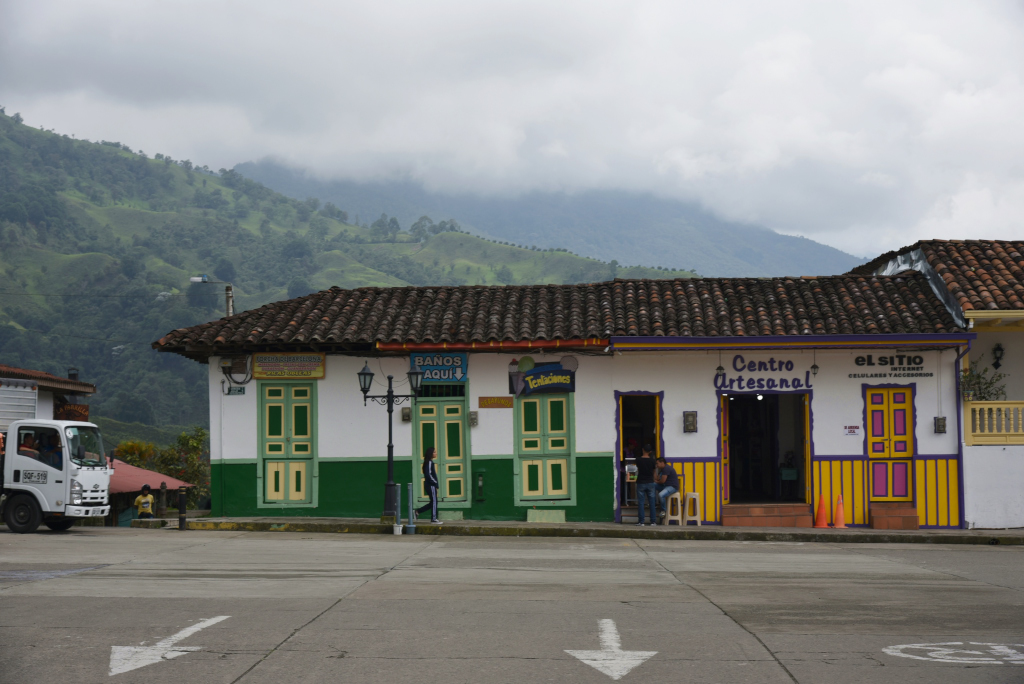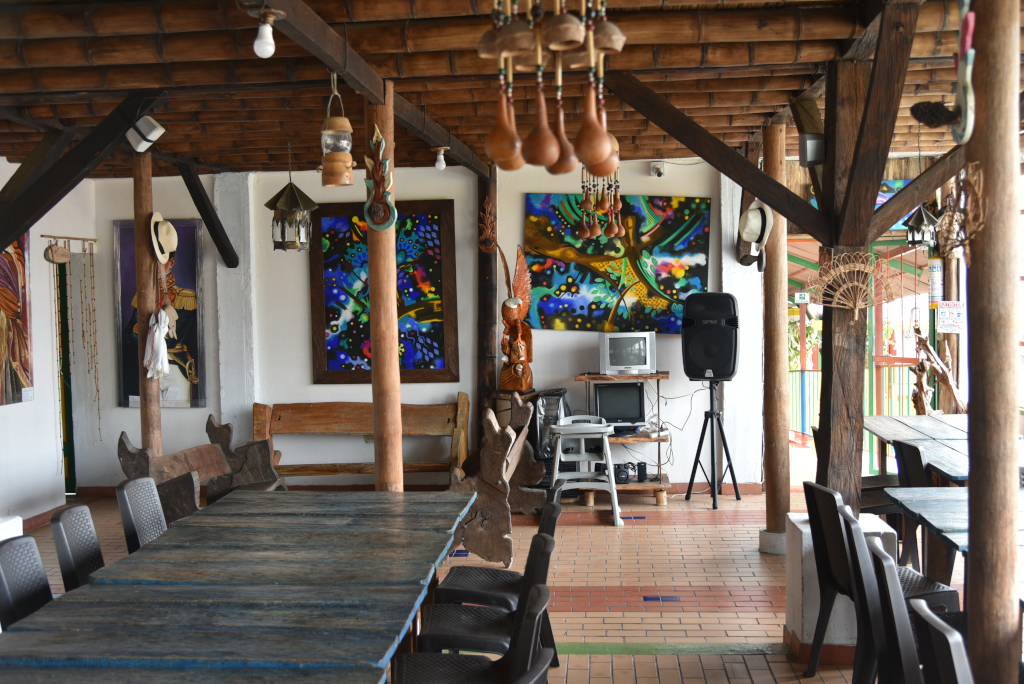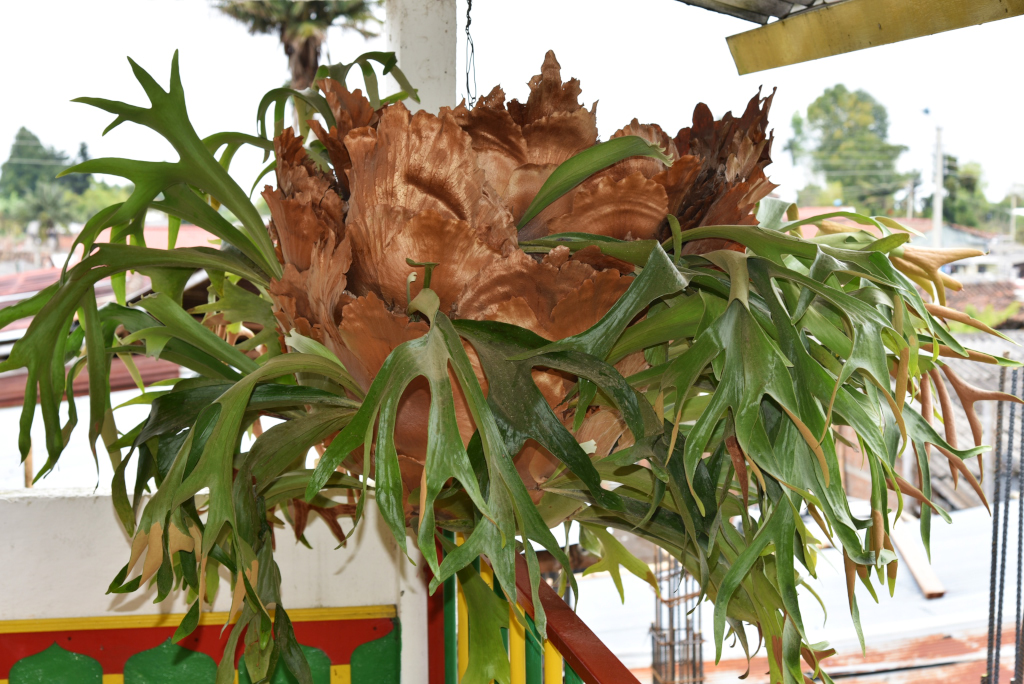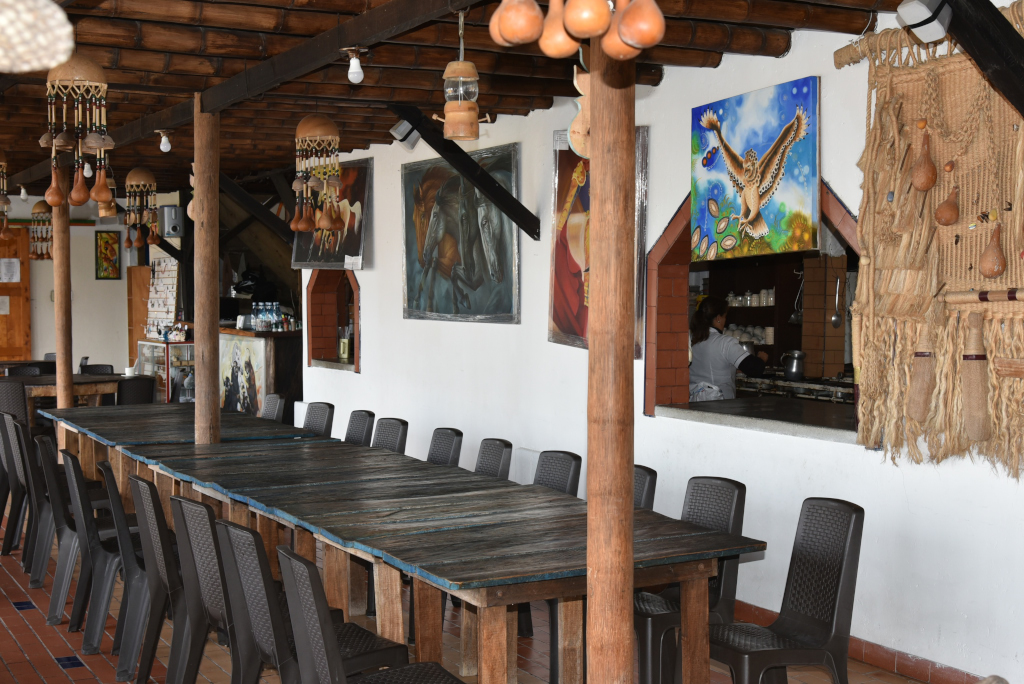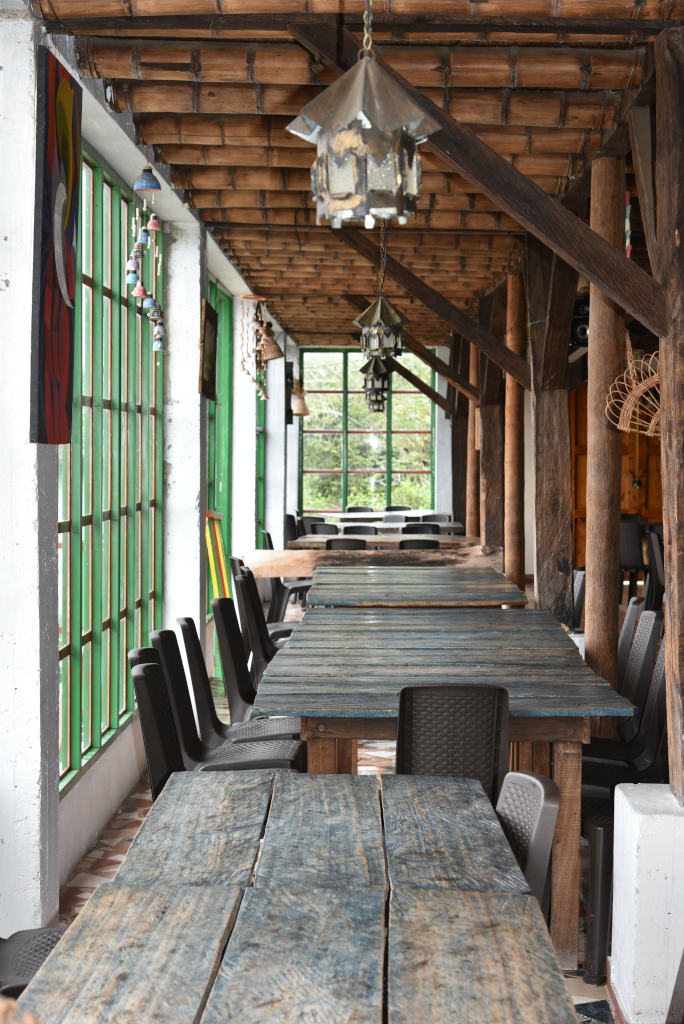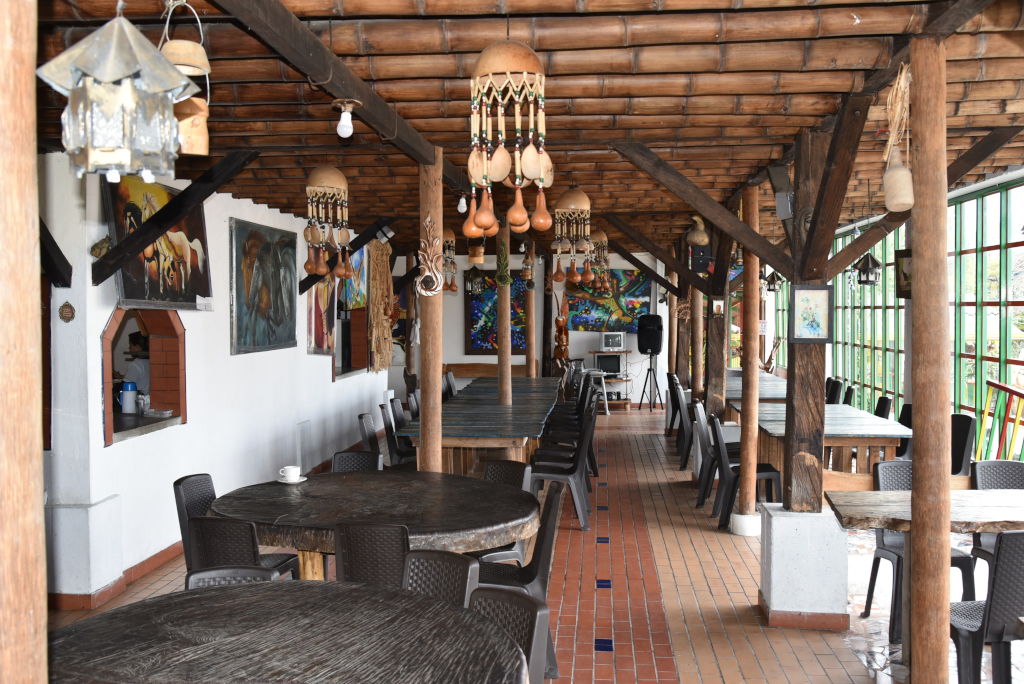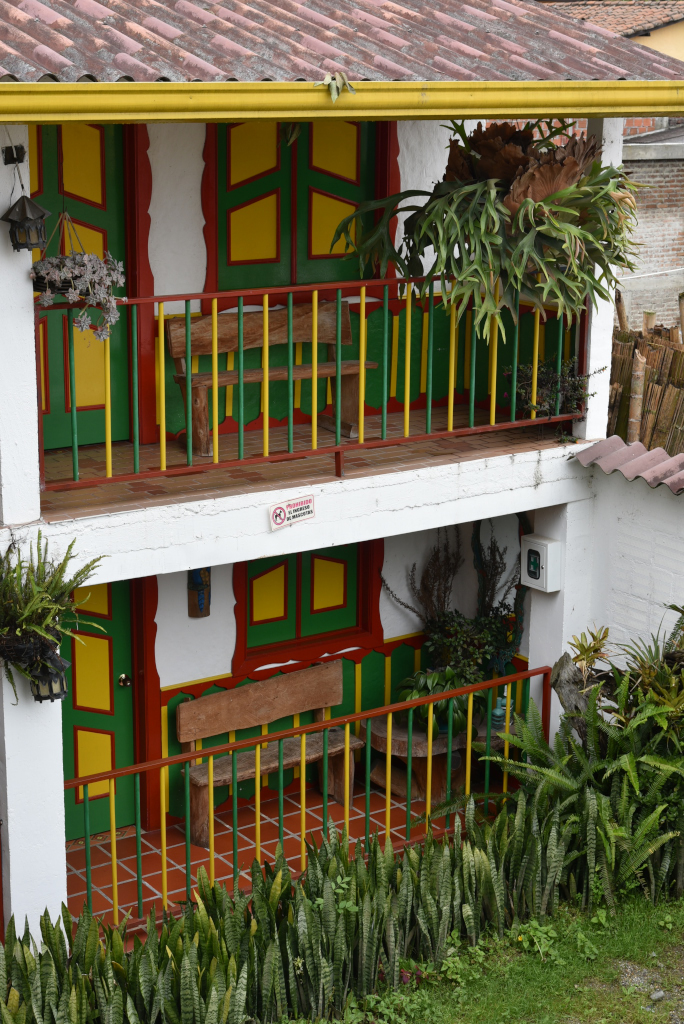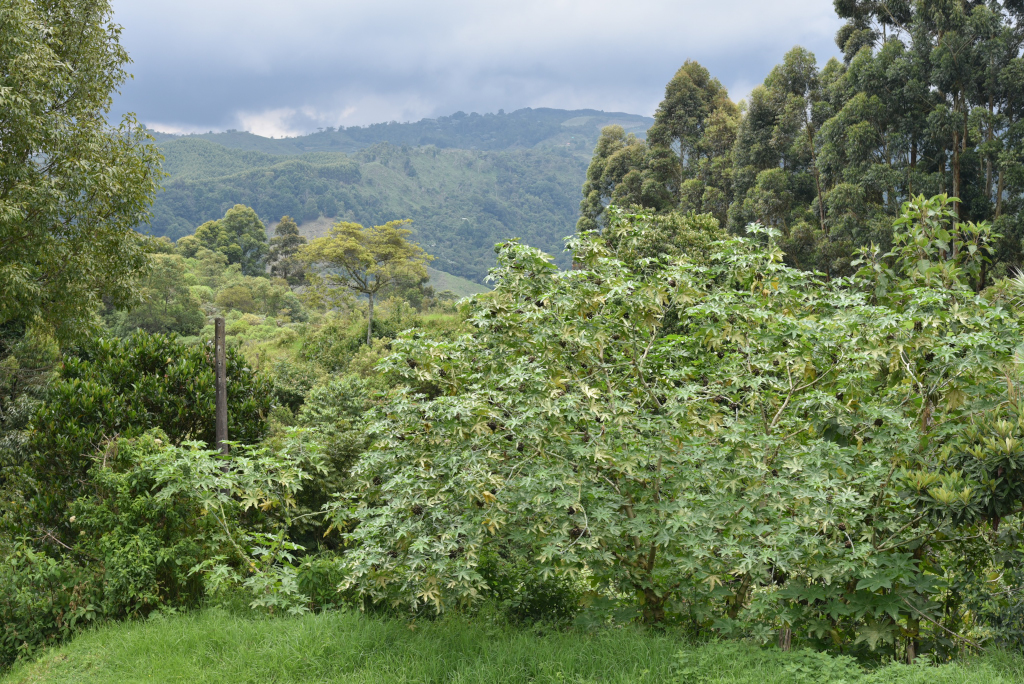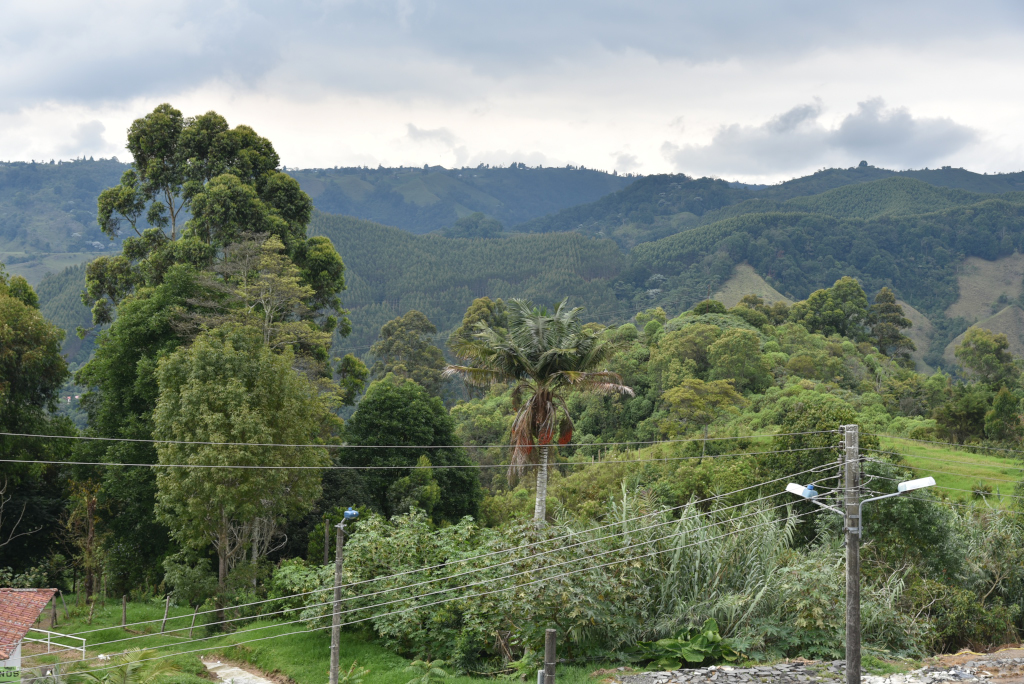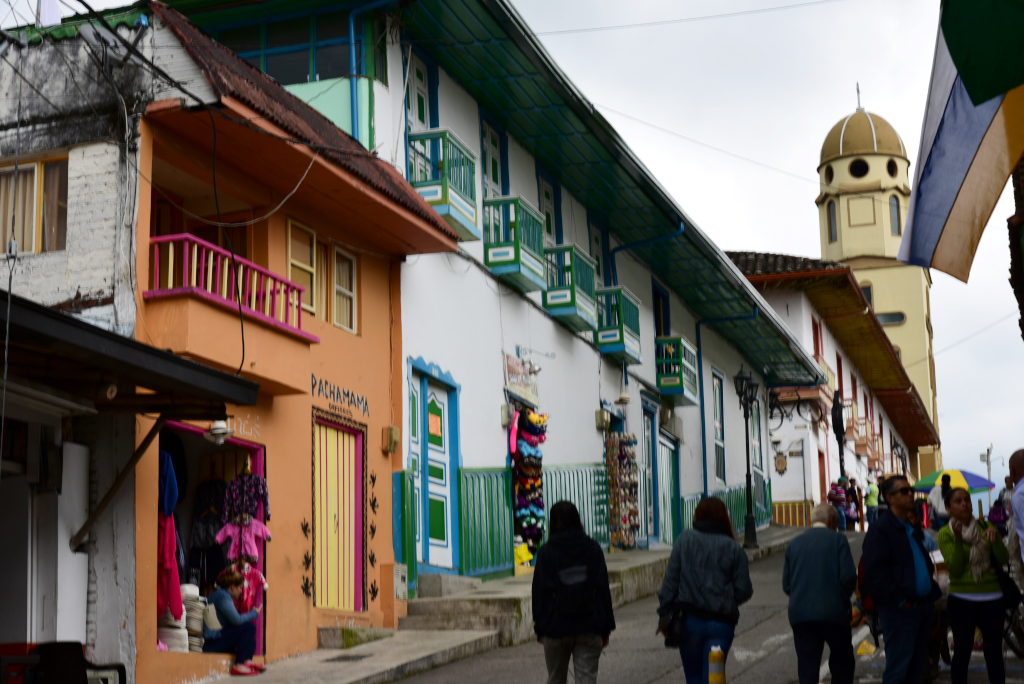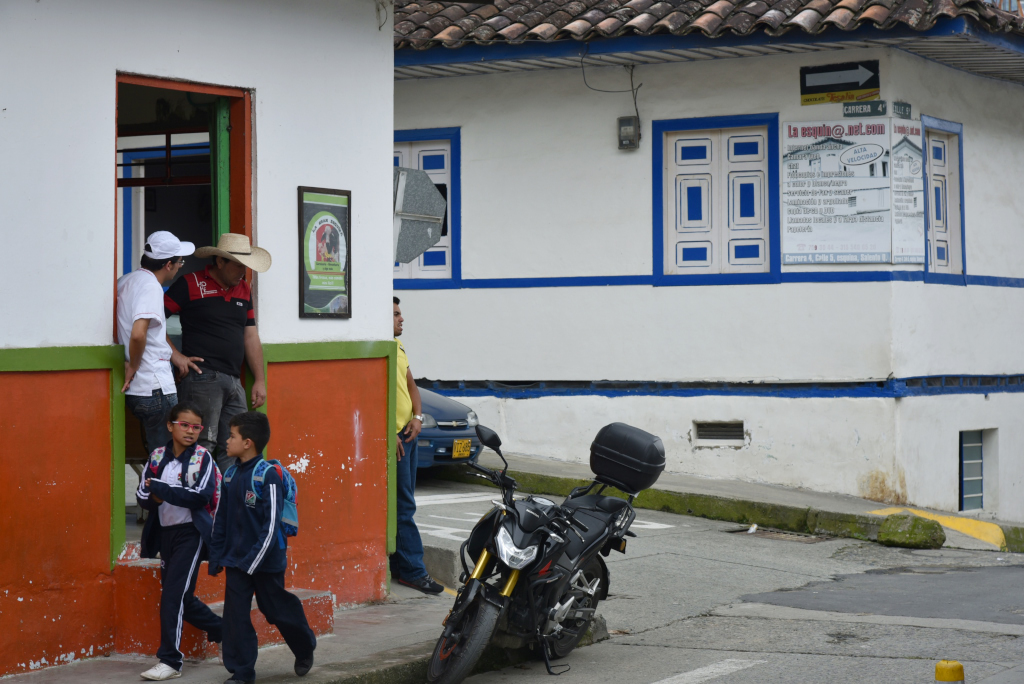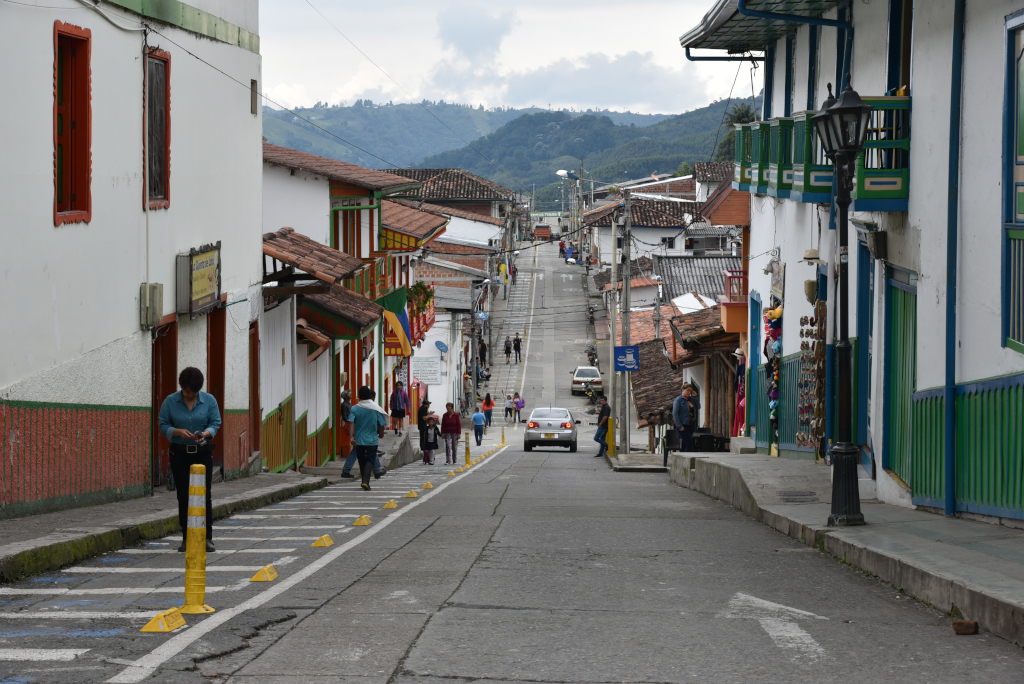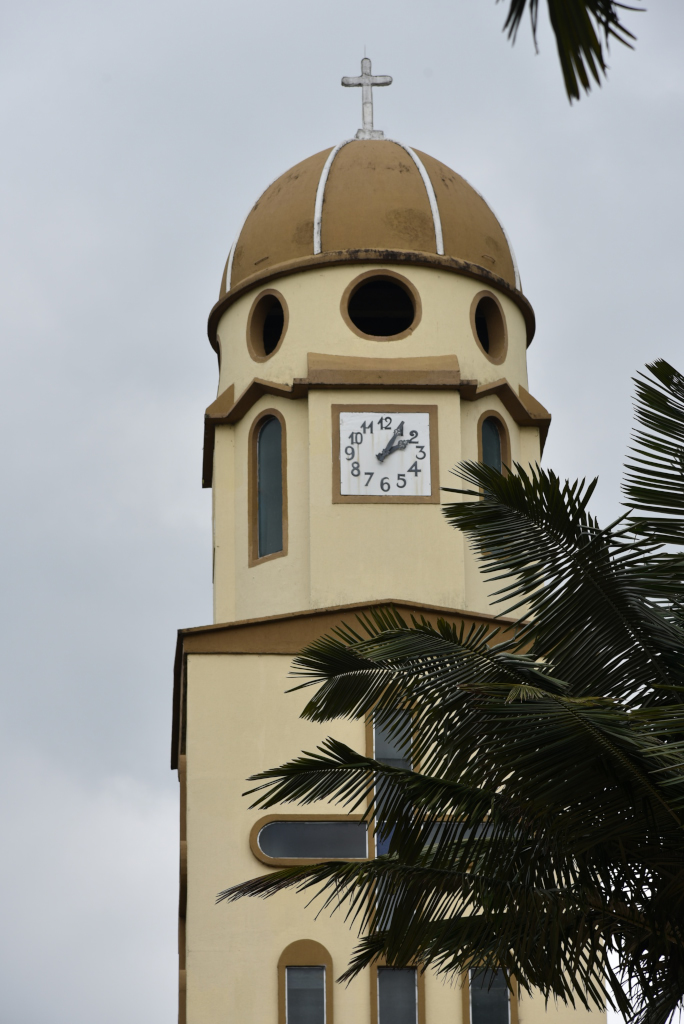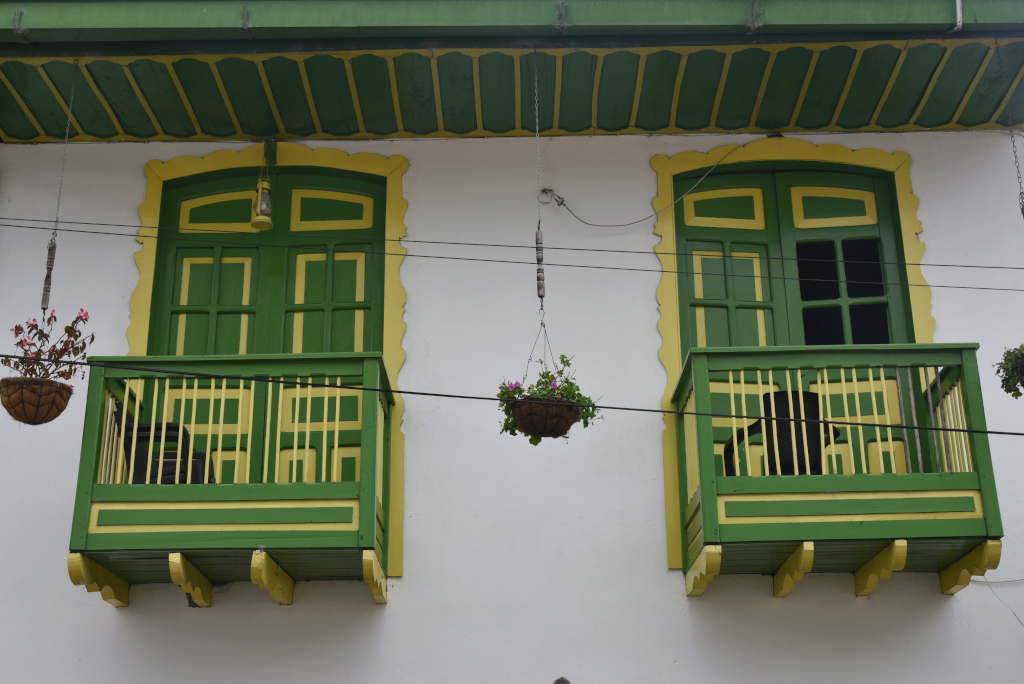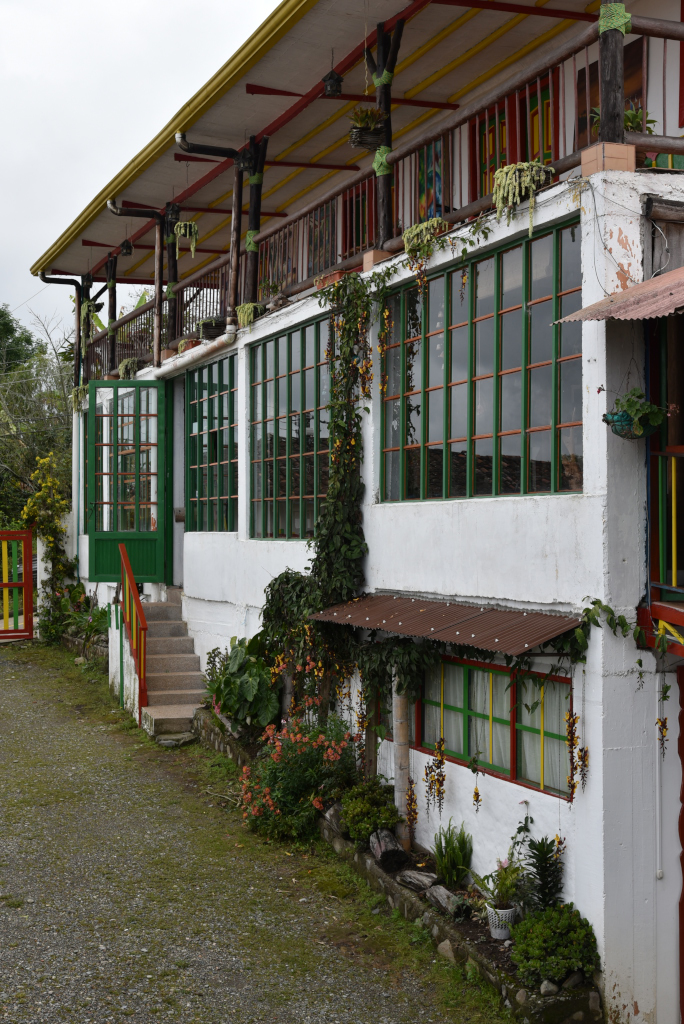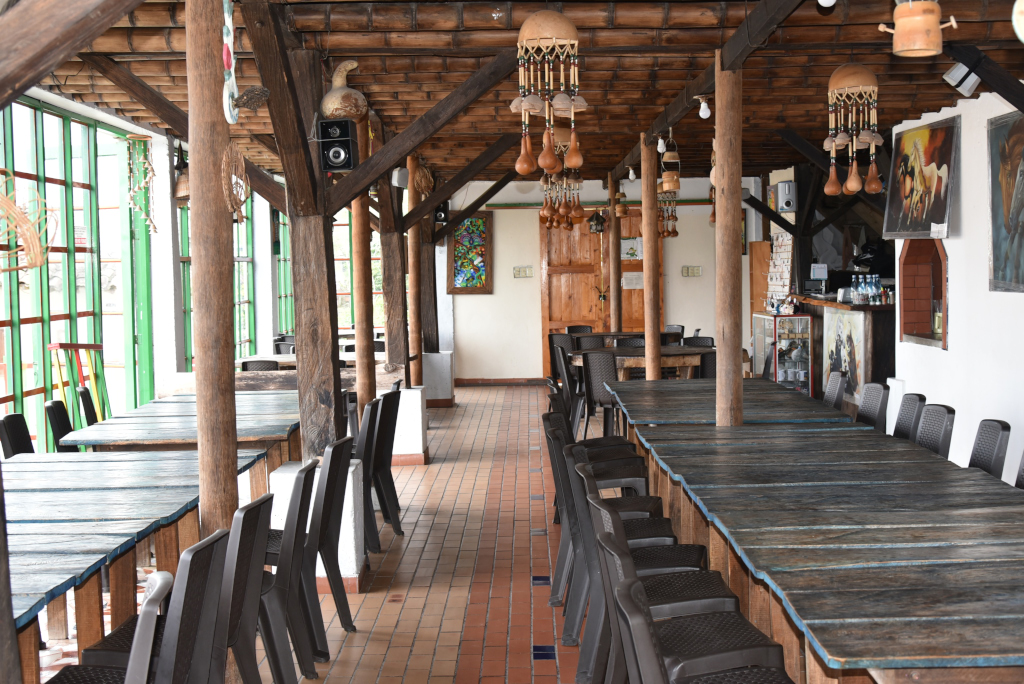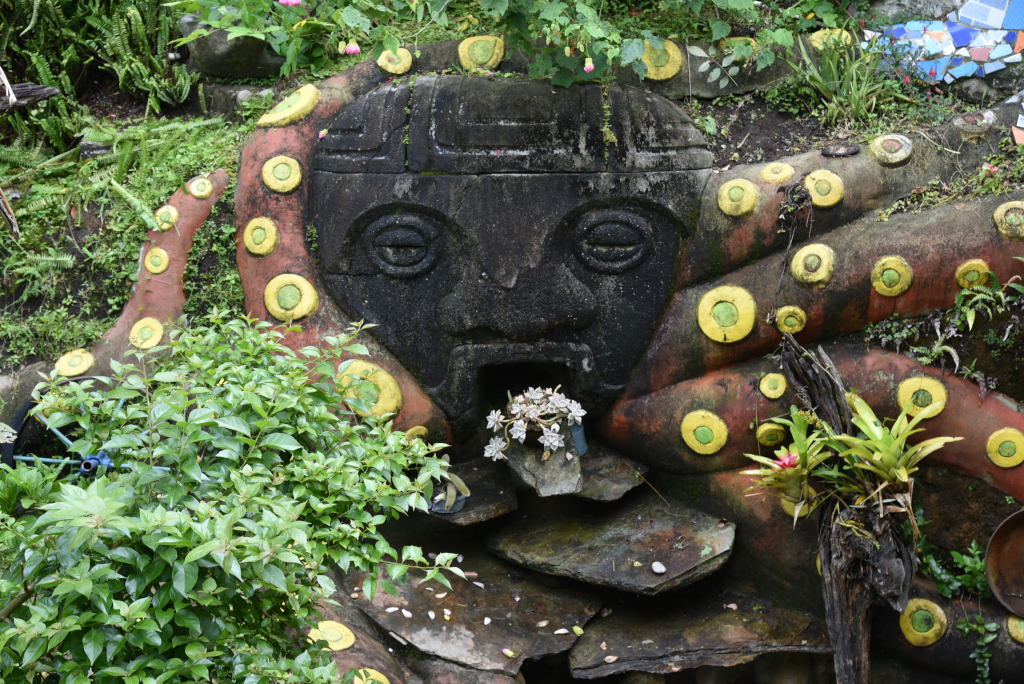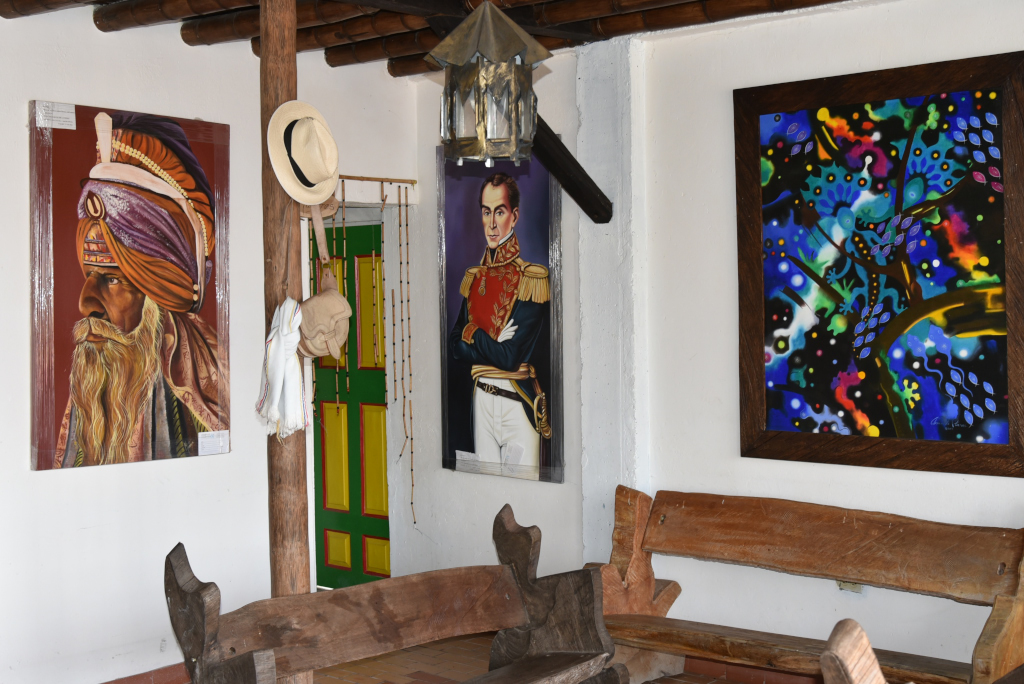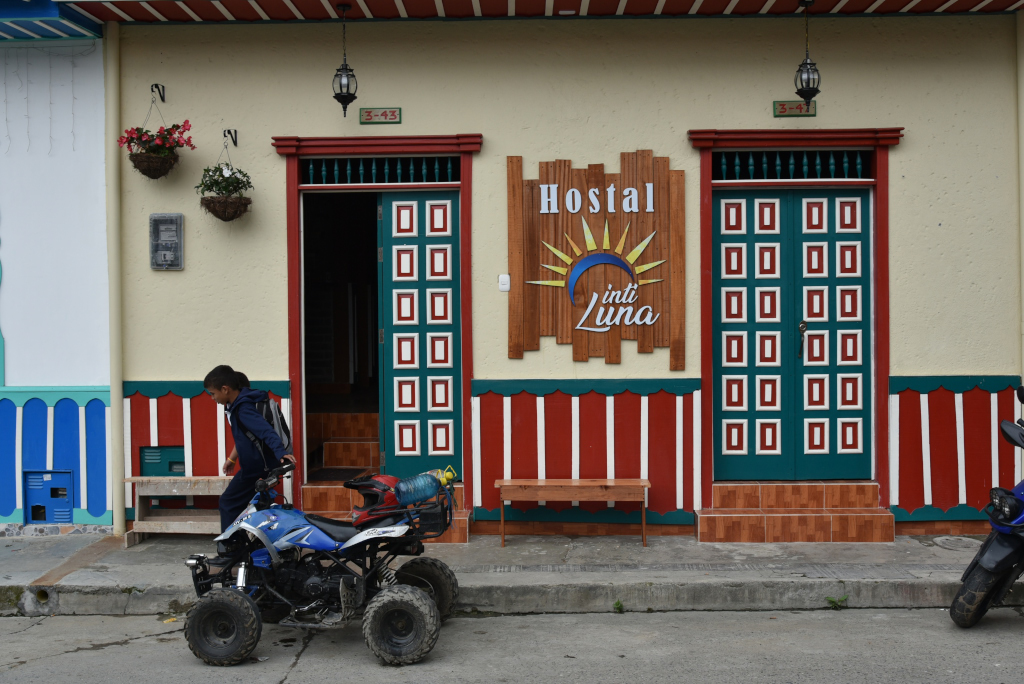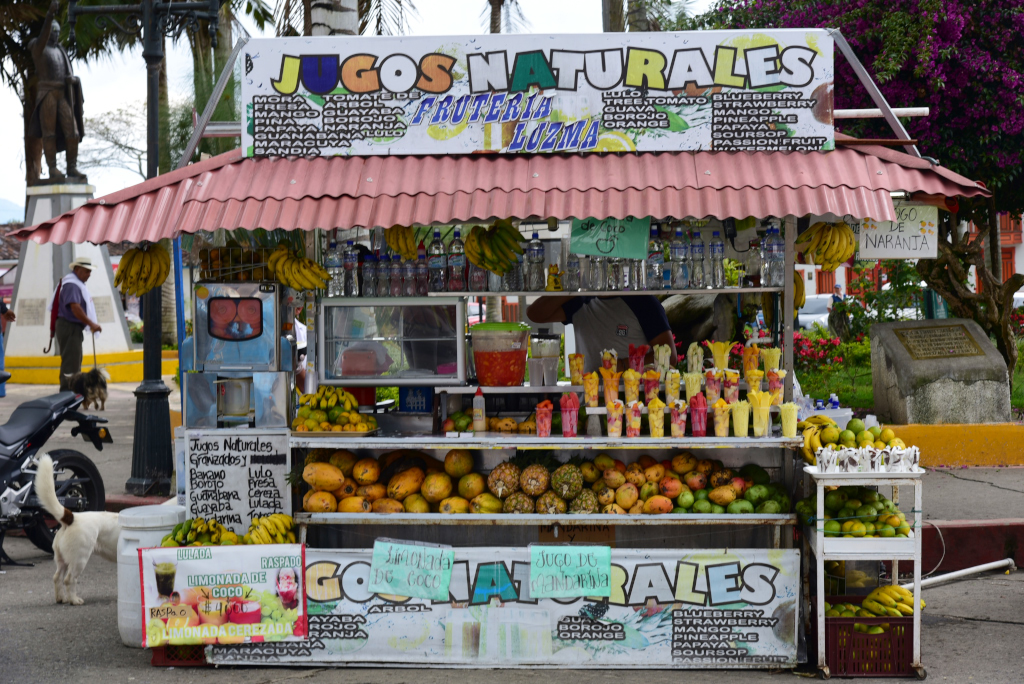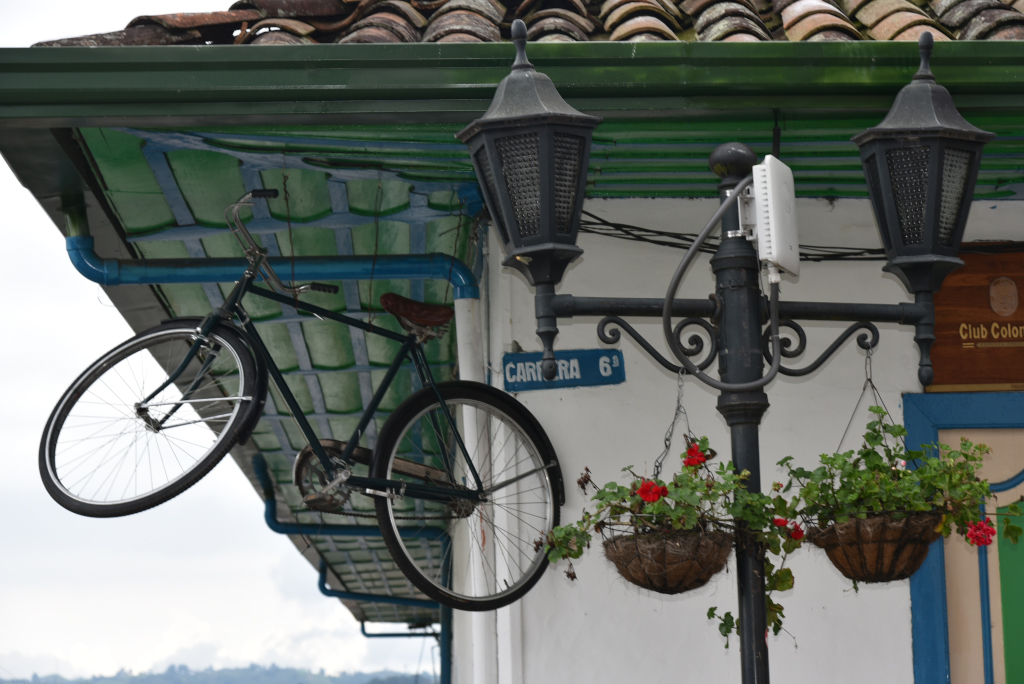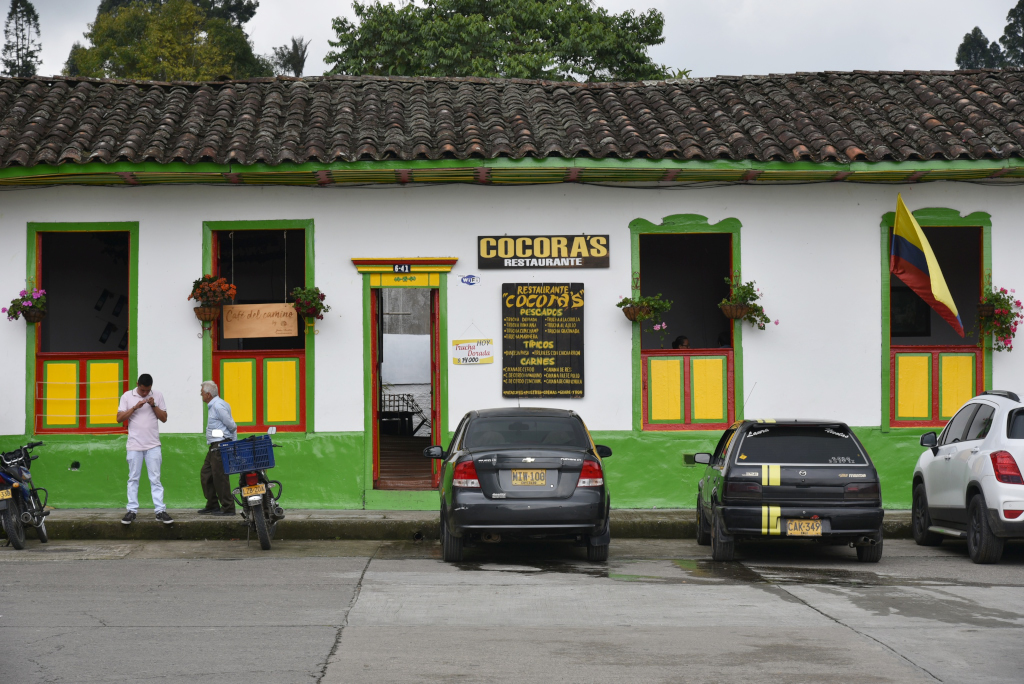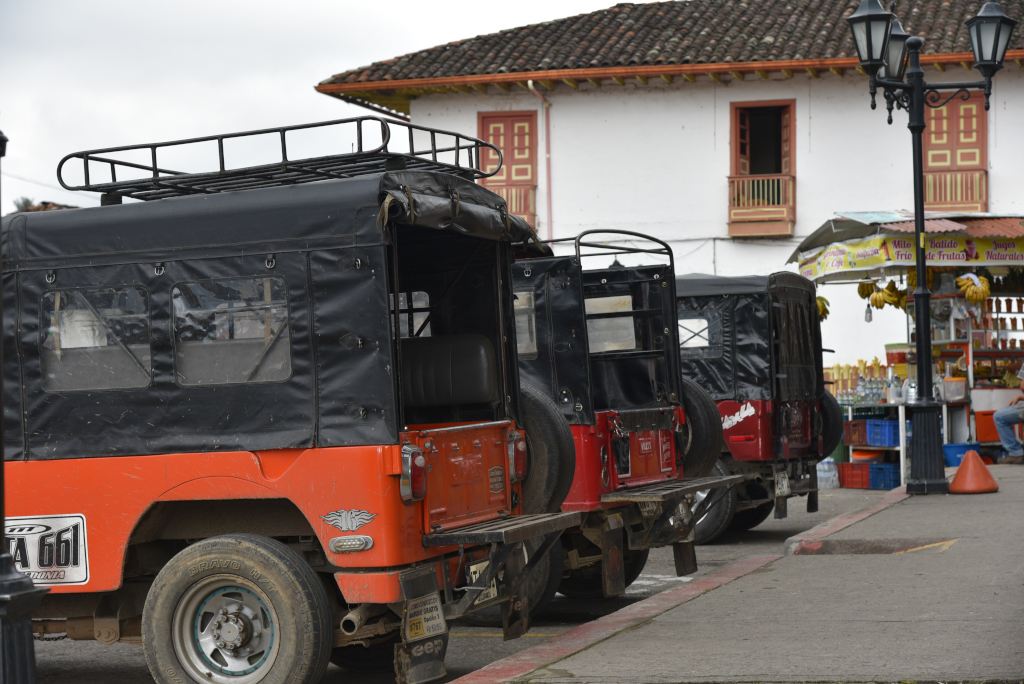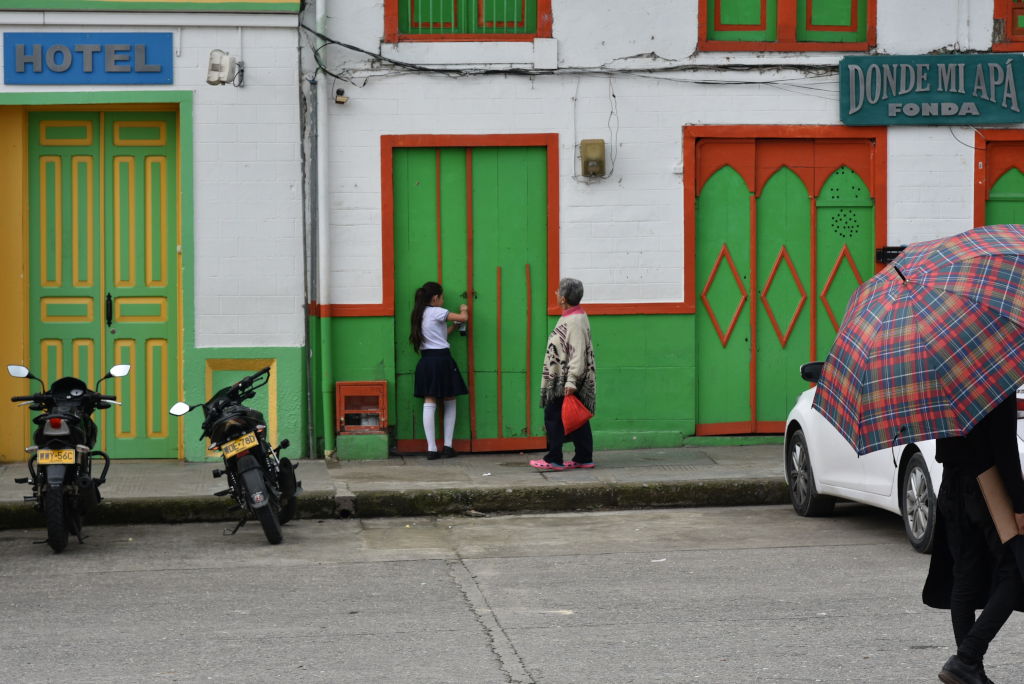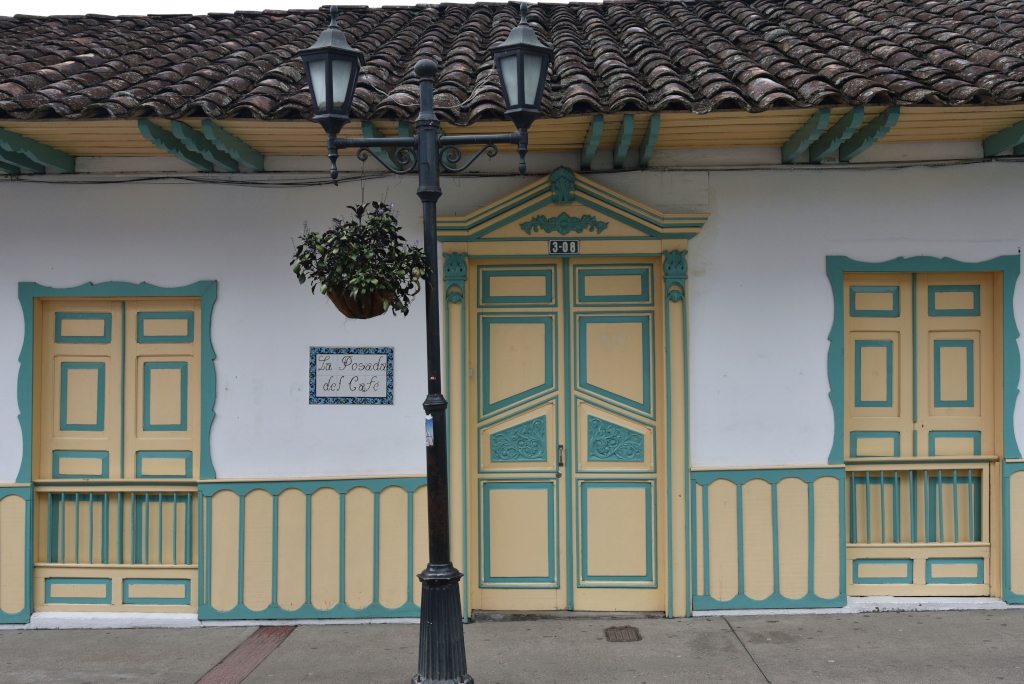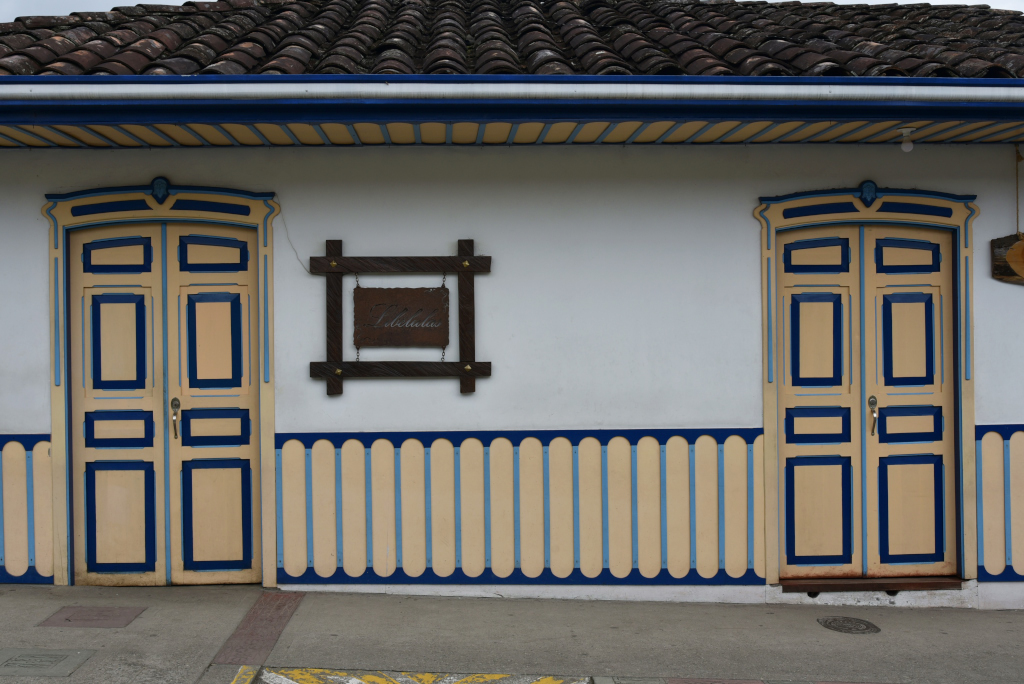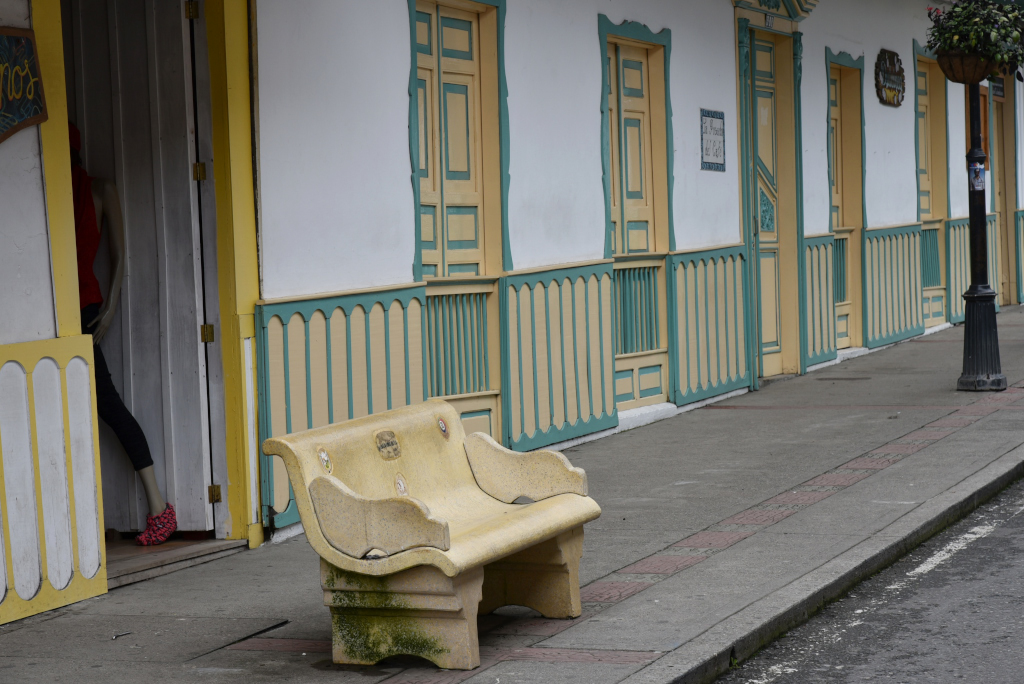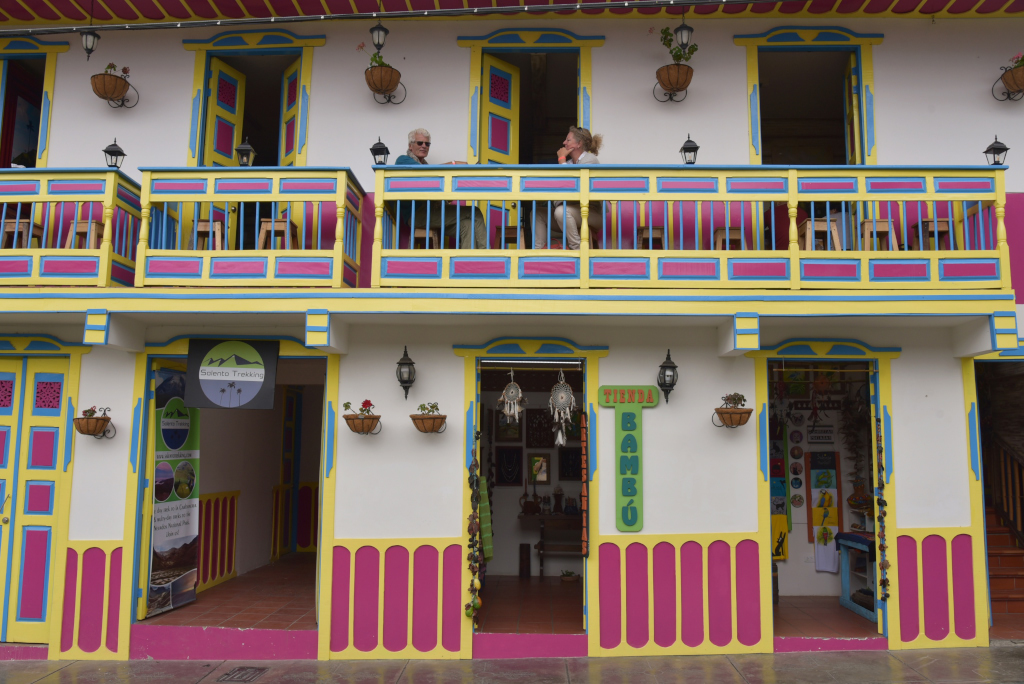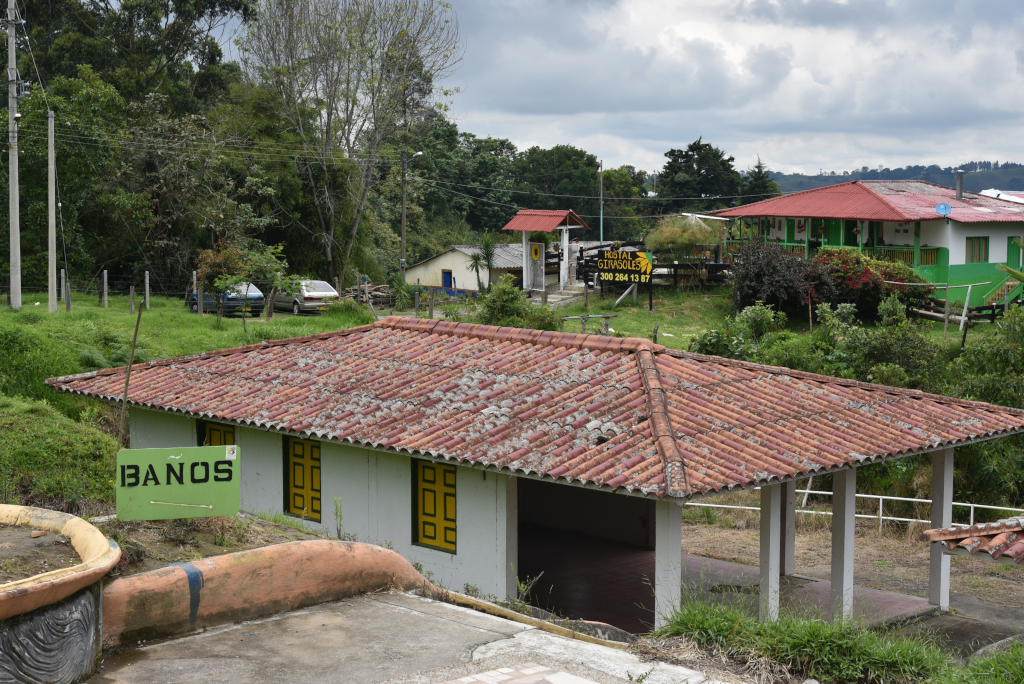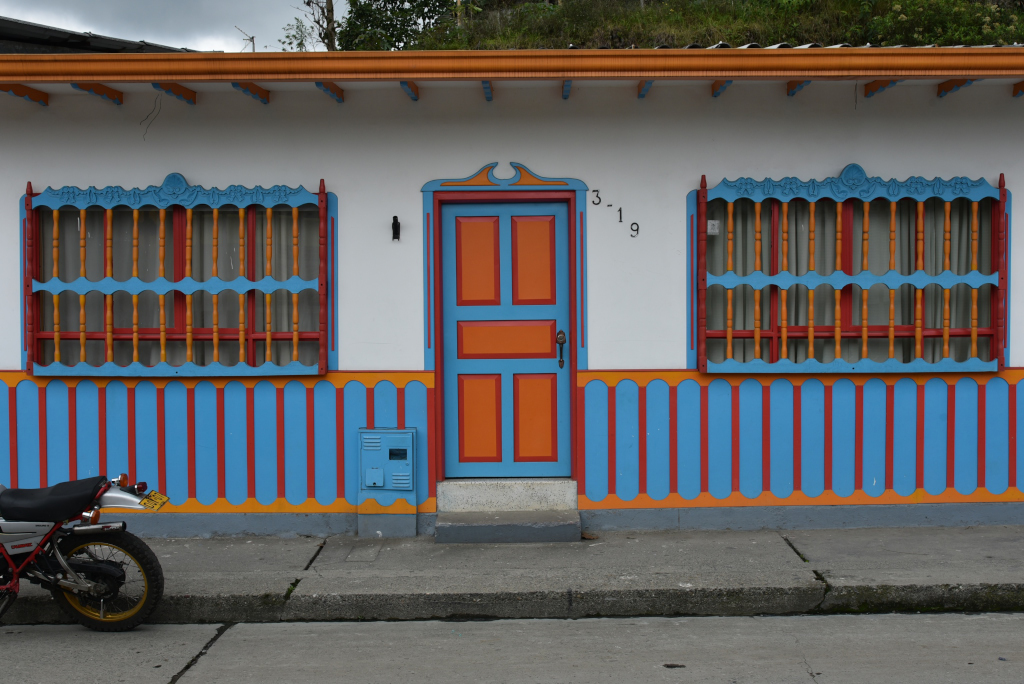April 11, 2018
The morning is a relief, without the pressure of having to get up early for the purpose of leaving on some major endurance exercise. I can wake up leisurely, let the time unfold … writing, booking hotels, answering emails, editing photos, publish a blog page … Sigh, where did all this work come from?
Breakfast in the expansive hall lined with gaudy oil paintings, wooden pillars regularly spaced next to the heavy wooden tables, the large picture windows looking out over the emerging blue sky. Construction noise comes from the neighboring lot as well as activity from the schoolyard. I enjoy a breakfast of scrambled eggs with an arepa and scorching habanero-based salsa in addition to a strong coffee while conversing with the owner. And not only has she made a strong coffee, but filled a thermos with the same coffee, all for me!
She tells me the story of her life, and how it led to the creation of this hotel. She and her husband had for many years owned a two restaurants and some shops, and while they may have made reasonably good money for the scale of their enterprise, it became far too much work, never mind the perennial issue of trying to maintain an adequate degree of commitment on the part of employees, who were happier staring at their cell phones than attending to customers. It brings to mind an irony of the country, while huge swaths of people are unemployed or marginally employed, it is also difficult to get good employees, as hiring is most concentrated in areas with high employment.
They divested themselves of their businesses and constructed this large hotel with the idea of catering exclusively to groups. They earn just as much money now, the work is more focused and structured, clients are far easier to deal with, they can operate with a pared down staff, they enjoy a stellar reputation with their customers, and above al enjoy what they do far more. In the long run, however, they will be looking to sell this business as well, as their two daughters are not likely candidates for succession. One helps out with the business now and is quite artistic, but has already developed her own life with her partner elsewhere in town, while the younger daughter is a bright shining star, looking for success on a far grander scale than the likes of Salento could offer.
Salento is a small but pretty town, its beauty complimented by the extraordinary nature in the area, of which I have had the opportunity to see little, although the Valle de Cocora I visited yesterday does rank as one of the most important attractions of the country. Salento itself is a paean to colour, door frames, window frames and shutters in bold solid colours ubiquitous throughout the town.
Elaborate wooden window grills are painted blue and red, on one house, red balustrade patterns adorning the blue lower portion of a wall, the door frame coffered orange on blue. Another house features nested red and white geometric patterns on the coffers of a dark teal door. Another house features solid lemon doors and shutters, with embellishments in pink. And of course, the typical terracotta roofs are ubiquitous.
More ostentatious houses feature more elaborate patterns, such as balconies and doors in red and yellow. The kaleidoscope of colour leads along the alleys all the way to the central plaza, where green dominates, and the tower of the cathedral holds sway.
The bus station must be one of the prettiest in the country, with two low-slung adobe structures, one housing the ticket office, the other a set of snack and juice kiosks, joined by an imaginatively tiled wide courtyard and a somewhat bizarre large sculpture. Doors are painted a bold blue, with bright red coffers. Small but pretty flower beds line the lot set below the town, and yet with stunning views of the lush countryside below.
The parque excels in colour, every house lining the square painted in some combination of the patterns seen elsewhere, including yellow, green, brown, red and blue. But the darkening sky mutes the extravaganza of colour, turning Salento into dark and depressing tones of grey. A few of the Willy jeeps are stilled parked on the plaza, but the business of driving visitors to the Cocora is long over for the day.
In the spirit of the wax palms for which the Cocora valley is famous, elegant palms also line the central portion of the parque. A few short blocks beyond the parque, the soaring hillsides disappear into the clouds, a sea of deep green merging into grey. And for the visitor depleted after a strenuous hike in the Cocora valley (or beyond), there are several stands with ample cut fruit and juices, although upon further inspection, the fruit doesn’t look all that fresh. From a distance, the impression is positive, however.
Carrera 6 is the centre of action, with all the hip galleries and coffee shops, and a few of the overpriced posadas thrown in for good measure. A variety of people loiters on the street, from locals to campesinos, Colombian tourists, backpackers and local hipsters. The coffee shops tend to be on the artsy side, but in the end serve coffee that is good, but not exceptional, not what I would have expected in the eje cafetero. I think I offended some by telling them that the cheap coffee I bought in Exito was better than their overpriced boutique coffee – except that it’s true.
The galleries offering arts and crafts are of a much higher quality than I have seen elsewhere, for which I am most grateful. The usual dream catchers, mobiles, trinkets, bamboo carvings, T-shirts and other inexpensive mementos abound, but a number of shops also feature imaginative jewelry made with semi-precious stones and various alloys. The inclusion of gold and valuable stones drives the prices up substantially, but imaginative, well-crafted pieces with less valuable ingredients abound and are far from expensive.
The work exhibits similarities to the jewelry I bought in Popayán, but not as exclusive as the work I saw at Saheima in Cali. Elaborate pendants, beaded necklaces, rings with delicately crafted settings, filigree bracelets, and so on. There are few tourists here during the day, but then most people come to trek in the Cocora Valley and beyond, for which I sadly have no more time. I could easily have spent a week here. No, several weeks in the region at least. But that will have to wait for another time!
The apparent peace and tranquility of the bus station is deceptive, as the taller agent erupts into comical gesticulation and joking, one outburst leading to an even more outrageous one. He comes into full swing when he finds out that one of the passengers waiting to go to Pereira is from Venice. The man visibly cowers as the conductor and myself let loose, the Colombian embark on the most ridiculous foray into Italian humour, employing a degree of fluency of idiomatic Italian that seems incredible for someone that has never gone far from this area. He apparently learned this from his former neighbor, but that seems almost improbable. And he is incredibly funny, truly Italian in the nature of the outrageousness he descends into.
The conversation at the back of the bus to Pereira is more muted, Giacomo expressing his frustration at being a member of a generation in Italy that has little hope, that continually has its noses rubbed into the well-being of their parents’ generation, but inevitably condemned to pay the price for their parents’ excesses. As with many other members of his generation, he has sought his happiness elsewhere, much as he concedes that in many ways Italy is an incredible country. Yes, and who would debate that. And yet the degree of corruption, debt, living costs, taxes and bureaucracy make survival extremely difficult. He has come to Colombia to see more of Latin America, and yet despite my describing the joys of the country to him later on at the Pereira bus station, he has a strong hankering to return to Mexico, a country he has grown familiar with, fallen in love in, and seems to offer a more suitable and sophisticated home.
Back in Pereira, the streets are emptied, given the deluge erupting from the sky and the torrents of water cascading along the streets. The Hotel Central 418 offers a suitable welcome to Pereira, its stark, tiny utilitarian rooms a bunkered home in an urban environment that has a prison-like feeling to it. The room features a bed, tiny desk, modest bathroom, large television screen, and compact shelving unit, the walls entirely unadorned, a place one would never call home, and certainly a very far cry from the kinds of accommodation I have been lucky to experience in my stay in Colombia.
The owner is celebrating six months in the country after some 20 years in England, his chipper Cockney accent tinged with a touch of Latin. He moved back to Colombia because he simply wanted to come home to the country he loved, although it is hard to appreciate a love for a characterless place such as Pereira. The small and modest Italian eatery down the street offers a friendly respite and reasonable quality food, anything being welcome in this depressing environment.
Wanting to avoid any potential difficulties, I follow through with the online booking for the Avianca flight to Bogotá. The web check-in seems to complete properly – until the conclusion, when a message is displayed, indicating that I need to demonstrate a printed boarding pass. Wait a minute – isn’t the whole idea of the web check to assure that the process remains entirely electronic? I don’t have access to a printer, and it seems that the airline has no capacity to print the boarding passes either.
I try calling the reception, but the phone in the room doesn’t connect to the reception. I clamber slowly down the two flights of stairs, carefully placing my feet sideways on the steps to ensure that I don’t fall, given how narrow they are. The exceedingly pretty receptionist assures me that she can print the boarding pass for me, except that when I forward her the email with the boarding pass, then return, it turns out that the printer is not working.
I watch in dismay as she attempts various approaches to printing the document. So here I am, 10:30 pm in the evening in Pereira, having planned on spending the evening writing and with other personal business, having to try to determine what the problem with the communication between the PC and printer may be. Probably not insurmountable, but not what I signed up for either. Resigned, I return to my room, carefully climbing the narrow steps again, knowing that at the worst, I can look for a print shop in the morning.

